Feed aggregator
The Public Life of Sherlock Holmes: Poirot on the Radio
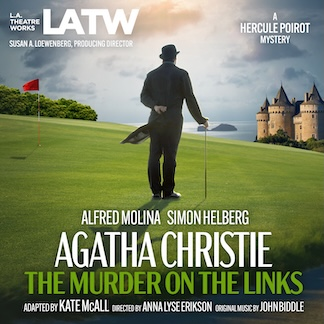 I enjoy radio plays, and frequently listen to them on my phone while I drive, work, or drift off to sleep. I only recently noticed Audible’s sleep timer feature, which is certainly useful for the latter.
I enjoy radio plays, and frequently listen to them on my phone while I drive, work, or drift off to sleep. I only recently noticed Audible’s sleep timer feature, which is certainly useful for the latter.
This includes The New Adventures of Mike Hammer, Nero Wolfe (on the CBC), Terry Pratchett’s Discworld, Clive Merrison and John Stanley as Sherlock Holmes, Dirk Gently’s Holistic Detective Agency, The Caine Mutiny Court Martial, Mistletoe Murders: And Hercule Poirot.
I enjoy audiobooks and listen to them all year long. They let me get to books I wouldn’t have time to sit down and read. And lets me re-visit favorites, easily.
But I quite like listening to a radio play. I’m fortunate that there are a couple dozen good Poirot ones. And John Moffatt’s are in my rotation all year long.
Of course, I wrote about David Suchet’s masterful performance on British TV. It was Suchet’s Poirot, and Maury Chaykin’s Nero Wolfe, which led me to read the stories they were based on. I cannot possibly imagine a better Poirot, ever.
I have gone in-depth on radio Poriot, here and here: I’ll talk about them below. But first, a bit of a surprisingly good radio Poirot.
Murder on the Links – Alfred MolinaI think Molina is most recognizable among the younger crowd (which I am NOT a part of), as Doc Ock in the Spider Man movies. He recently played Inspector Gamache in Three Pines – a very good Canadian miniseries which ABSOLUTELY deserved a second season.
There are eighteen novels by Louise Penny, and I’m still bummed it was canned after only one eight-episode story arc. It quite liked it. After watching it, I would really like to see Molina take a shot at Georges Simenon’s Inspector Maigret. I think Molina would do well in the part. I wrote about Rowan Atkinson’s (yeah, that guy!) solid Maigret, here.
Molina starred in a contemporary made-for-television version of Murder on the Orient Express, set in 2001. It’s not very well thought of. I don’t think the attempt to set it in current day worked at all. But a few decades later, Molina would get another shot at Poirot.
LA Theater Works produces wonderful radio plays, featuring some well-known, excellent actors. I have their 2008 version The Caine Mutiny Court Martial and listen to it multiple times a year (I mention the play in my post about one of Bogie’s best movies).
In 2021 they produced a version of Christie’s novel, The Murder on the Links. Surprisingly to me, Molina was cast as Poirot. The Big Bang Theory’s Howard Wolowitz (Simon Helberg) is Captain Hastings.
In this novel, Poriot is summoned to France, and arrives to find his prospective client, murdered. The body was found on an unfinished golf course – thus, the title. This isn’t particularly one of my favorite Poirot stories. I do like the relationship between Suchet’s Poirot and snooty French Inspector Giraud. The TV show escalated what’s in the book, but it improved the story for me.
I think Molina is good as Poirot. I like John Moffatt better (though that is a VERY high bar). And I do think he could well be a better Maigret. But if you’ve only seen his Orient Express movie, I think you’ll have a higher opinion of him if you listen to this radio play. I like him.
I did not recognize Helberg, with his diction and British accent. Once I knew it was him, and I focused, I could hear it. But it’s not obvious. To me, at least.
Production values for LA Theater Works are top flight. They have produced some excellent plays. I’m a week late with this post, as this was the free weekly broadcast, last week!
I listen to this through Audible, and I like it. Give it a try.
ORSON WELLES
Yeah, that guy. You might think he’d be more suitable for Nero Wolfe than for Poirot. But Sydney Greenstreet was also gargantuan (you got that reference, if you’re a Wolfe fan) and he was a bad radio Wolfe.
Welles did a live radio drama series from 1938-1940, with one-hour adaptations of plays, novels, and movies. The Campbell Playhouse was a successor to his The Mercury Theater on the Air.
The Murder of Roger Ackroyd aired November 12, 1939, produced by, and starring, Welles (he starred in every episode). Welles played Dr. James Sheppard, as well. Since he’s the narrator, this one really is all about Orson. It also featured Alan Napier, who played Sherlock Holmes on TV, but is best known as Alfred the Butler, to Adam West’s Batman.
There is an intro with the radio announcer talking with a grumpy Poirot. Then it moves into the story. This novel is considered one of her very best, and it certainly has some surprises in it. The script was written by Herman Mankiewicz, who in just a few years would co-write Citizen Kane, with Welles.
I find Welles annoying as heck as Poriot. He definitely has a Belgian/French accent. But I don’t enjoy listening to him. Which kinda ruins the play.
I recommend that people check out stuff I like. Including the other three radio plays/series, in this post. As for Welles – it’s worth listening to for a Poirot fan. But I don’t repeat this one.
JOHN MOFFATT
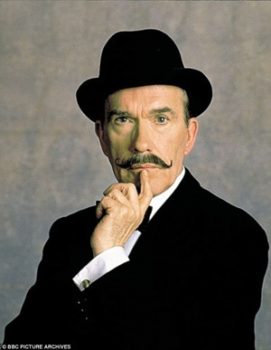 John Moffatt appeared in several episodes of Merrison’s Holmes series (the efforts of the talented Bert Coules), and had played Holmes himself in a BBC radio play. He was even Watson for twenty-four radio shows opposite Roy Marsden’s Holmes.
John Moffatt appeared in several episodes of Merrison’s Holmes series (the efforts of the talented Bert Coules), and had played Holmes himself in a BBC radio play. He was even Watson for twenty-four radio shows opposite Roy Marsden’s Holmes.
The BBC did a Poriot radio play with Maurice Denham, then one with Peter Sallis. But they struck gold when Moffatt took on the part for twenty-five of the original stories, and he is to the radio what Suchet is to the screen. He is a definitive Poirot. There a few different Hastings’; none particularly memorable. Philip Jackson, Suchet’s Inspector Japp, played the part on some of the shows, and I always like to hear him.
I prefer Hugh Fraser (Suchet’s onscreen Hastings) reading the audiobooks, to Suchet doing so. But I’d rather listen to a Moffatt radio play. All twenty-five are available, and I listen to them throughout the year. Mofatt also narrated the audiobook to Black Coffee, a novelization, based on a Poirot play written by Agatha Christie.
Peter Moffatt and Clive Merrison have brought us definitive radio versions of two great detectives. Would that someone would do the same for Nero Wolfe. The Mayer Moore Canadian series wasn’t bad, but not in this league. And Sidney Greenstreet? Not even remotely.
HAROLD HUBER
Huber, an American actor and entertainment entrepreneur, obtained the rights to Poirot for an American radio show. Agatha Christie’s Poirot debuted on February 2, 1945, featuring a live introduction from Christie, across the sea. Except, after about thirty seconds of silence, the announcer for the Mutual Broadcasting System explained that atmospheric conditions prevented the connection.
MBS did have the foresight to record a short-wave transmission from Christie earlier that day, and played that in place of her live appearance. Having Christie explain that Poirot was busy, so she would introduce the series, was a pretty neat move in those times LONG before cell phones and podcasts.
In the premiere, The Careless Victim, Poirot is looking for an apartment. An apartment in New York City, that is! Captain Hastings, Inspector Japp, Miss Lemon, and the other recurring characters in the stories didn’t make the ocean voyage, apparently. Inspector Stevens would serve as the police department’s primary character. Poirot makes the acquaintance of a Miss Abigail Thresher, at the same time he finds a body. He finds her intriguing, and she becomes his assistant at the end of the first show, filling the Hastings and Lemon roles. She’s kind of a feisty older lady, and she calls Poirot ‘chief.’
It’s not Canon, obviously. But it works. Poirot doesn’t go to Flatbush and fake a Brooklyn accent. Poirot still acts like Poirot. You don’t get Poirot at a country estate. Or walking through the mews. But I still feel like it’s Poirot while I listen to an episode. And that’s the point.
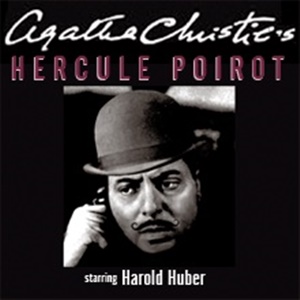 And what about Huber as Poirot? I’m a big Nero Wolfe fan. It took almost fifty years for a decent radio Wolfe. And that was a Canadian production starring Maver Moore. To this day, it’s not particularly well known. A few early attempts, including one starring Sidney Greenstreet (whose Wolfe was more Casper Gutman more than Rex Stout’s printed version), bore little resemblance to the character.
And what about Huber as Poirot? I’m a big Nero Wolfe fan. It took almost fifty years for a decent radio Wolfe. And that was a Canadian production starring Maver Moore. To this day, it’s not particularly well known. A few early attempts, including one starring Sidney Greenstreet (whose Wolfe was more Casper Gutman more than Rex Stout’s printed version), bore little resemblance to the character.
Such was not the case with Poirot. Huber’s impersonation is quite good, and I think he is much better than Albert Finney. His accent is spot on, and he conveys well the detective’s mannerisms and amusing ego. Listening to Huber is listening to Poirot, for me.
I wrote a lot more about the series, so click on over to that prior post. I find this an enjoyable listen.
TWO MORE POIROTS
In November of last year, Audible produced a new version of the first Poirot novel, The Mysterious Affair at Styles. Peter Dinklage (Game of Thrones) plays the great detective. I’ve only listened to part of it so far, thus, it didn’t make this entry. At almost four hours, it’s a pretty long radio play. But I will do a post on it.
Might try to run down Audible’s 2017 Murder on the Orient Express, with Tom Conti starring.
Prior Poirot Posts (PPP!)John Malkovich’s Poirot
Poirot’s The Hollow & Holmes
Talking About Poirot
Branagh’s Murder on the Orient Express
John Moffatt as Poirot
Harold Huber as Poirot

Bob Byrne’s ‘A (Black) Gat in the Hand’ made its Black Gate debut in 2018 and has returned every summer since.
His ‘The Public Life of Sherlock Holmes’ column ran every Monday morning at Black Gate from March, 2014 through March, 2017. And he irregularly posts on Rex Stout’s gargantuan detective in ‘Nero Wolfe’s Brownstone.’ He is a member of the Praed Street Irregulars, founded www.SolarPons.com (the only website dedicated to the ‘Sherlock Holmes of Praed Street’).
He organized Black Gate’s award-nominated ‘Discovering Robert E. Howard’ series, as well as the award-winning ‘Hither Came Conan’ series. Which is now part of THE Definitive guide to Conan. He also organized 2023’s ‘Talking Tolkien.’
He has contributed stories to The MX Book of New Sherlock Holmes Stories — Parts III, IV, V, VI, XXI, and XXXIII.
He has written introductions for Steeger Books, and appeared in several magazines, including Black Mask, Sherlock Holmes Mystery Magazine, The Strand Magazine, and Sherlock Magazine.
You Will Know—Singularity! Singularity Sky by Charles Stross
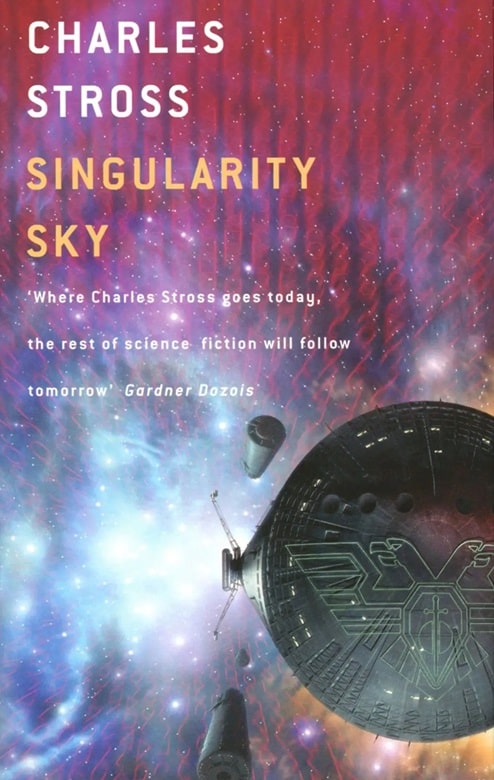 Singularity Sky UK edition (Orbit, 2005). Cover by Lee Gibbons
Singularity Sky UK edition (Orbit, 2005). Cover by Lee Gibbons
There’s a backstory to my reviewing Singularity Sky. Its 2003 publication date made it chronologically eligible for the 2004 Prometheus Award for Best Novel. But it was Stross’s first book publication, and none of the Libertarian Futurist Society’s members happened to read it until that year’s finalists had already been chosen.
However, there was a campaign to write it in, and in fact it received a substantial number of votes, though not quite enough to win; had it been nominated, it might well have won. Now, much later, it’s eligible for the Hall of Fame Award, which can go to works at least twenty years old — and it’s been nominated for that award. As the chair of the committee that chooses Hall of Fame finalists, I’ve just finished rereading it.
[Click images for singular versions.]
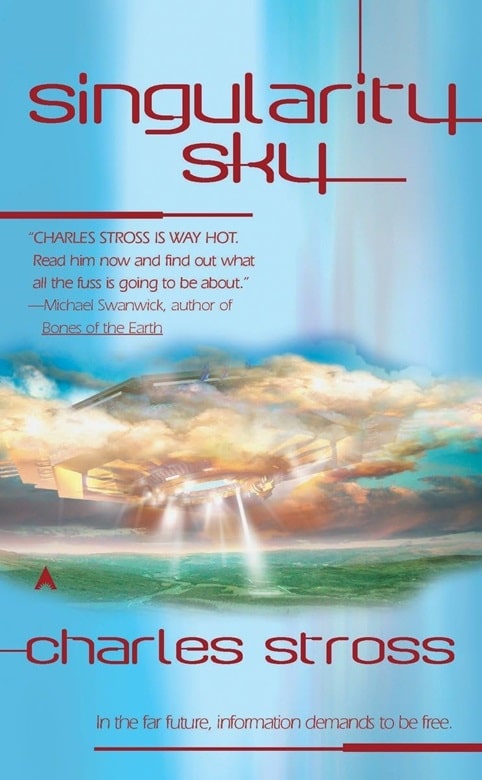
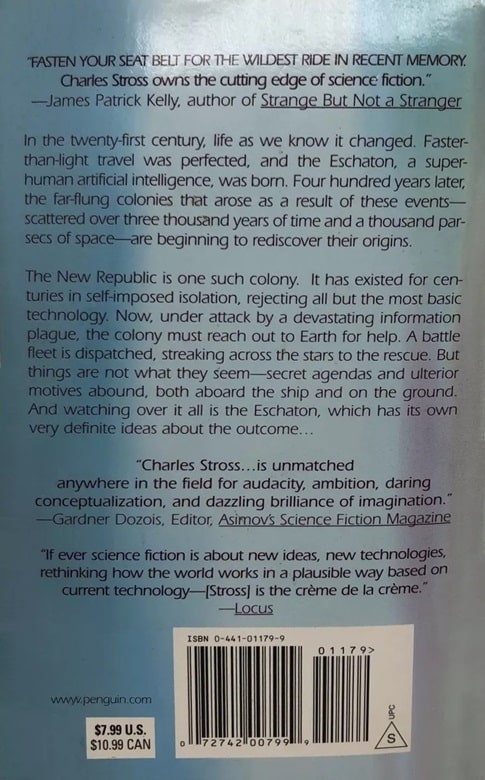
Singularity Sky (Ace Books reprint edition, July 2004). Cover by Danilo Ducak
Singularity Sky seems kind of marginal as libertarian science fiction. Two of the characters, Martin Springfield and Rachel Mansour, say that Earth, their native planet, has an anarchocapitalist legal system (one based on private law enforcement firms competing for customers); early on, Martin tells a police officer,
“For legislation and insurance, I use Pinkertons, with a backup strategic infringement policy from the New Model Air Force… For reasons of nostalgia, I am a registered citizen of the People’s Republic of West Yorkshire, although I haven’t been back there for twenty years. But I wouldn’t say I was answerable to any of these, except my contractual partners — and they’re equally answerable to me.
But none of the story takes place on Earth, and there are no scenes showing how things actually work there (as there were, for example, in Heinlein’s The Moon Is a Harsh Mistress or Vinge’s “The Ungoverned”). What we get seems to be a bit of surface ornamentation rather than a load-bearing speculative element.
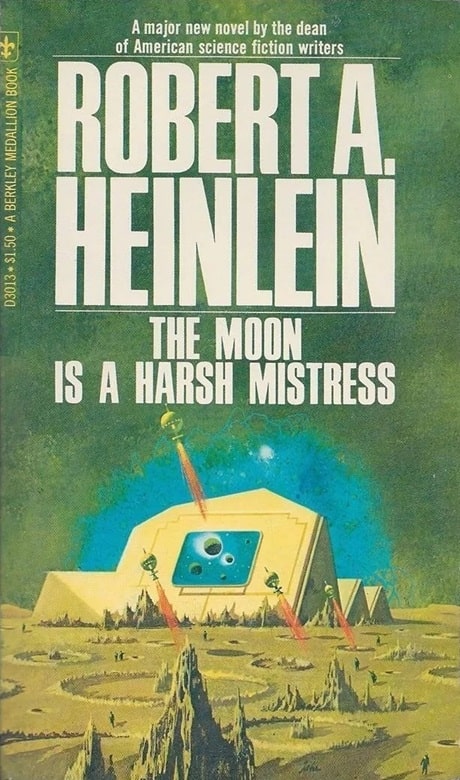
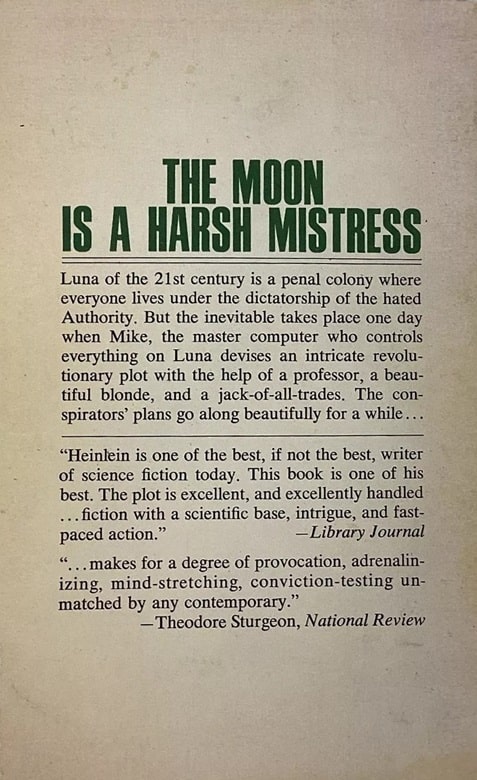
The Moon is a Harsh Mistress by Robert A. Heinlein (Berkley Medallion, September 1968). Cover by Paul Lehr
The actual setting of the story is the New Republic, which, despite its name, seems to be modeled culturally on Tsarist Russia. More precisely, it’s a colony of the New Republic in another solar system, Novy Petrograd, and a New Republican space fleet sent there, with Martin on board as an engineering consultant and Rachel as a diplomatic representative.
We see a great deal about naval operations and naval protocol, and about the New Republic’s security forces and the bureaucratic culture that supports them. It gradually emerges that some time in the past, a cosmic entity from the distant future, the Eschaton, reached back in time and scattered most of Earth’s population across multiple solar systems, where they created new societies largely influenced by historical cultures.
In the course of the novel, the New Republic has to deal with three different versions of liberation that undermine its institutions and customs. First is the Marxist – Gilderist underground on Novy Petrograd (the juxtaposition seems like a hat tip to Ken MacLeod’s early novels), which aims at the overthrow of the established regime through conventional revolutionary politics. Second is Earth, a source of subversive ideas such as “the concept of tax is no different from extortion” that the security forces class as “nonsense verging on sedition.”
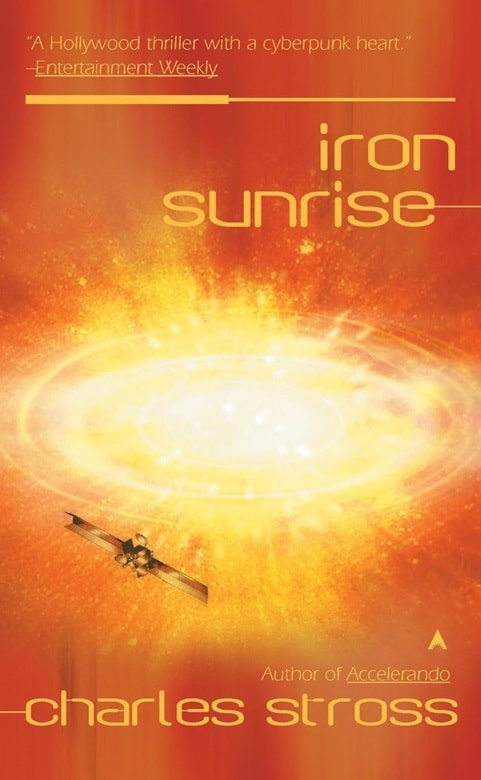
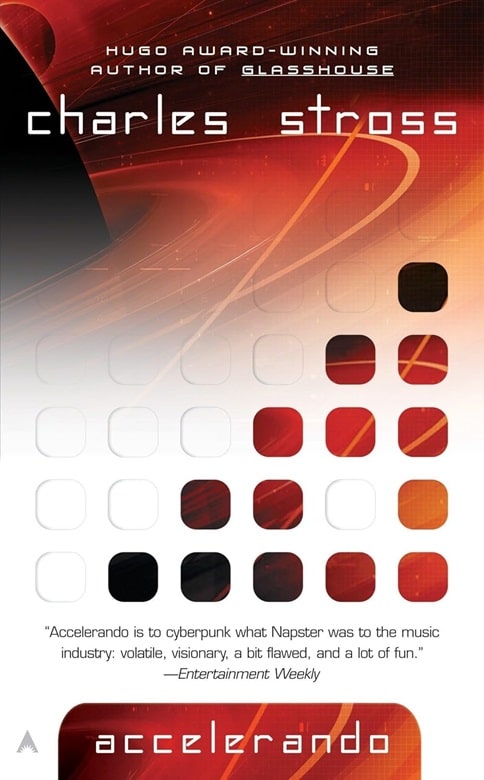
The sequels to Singularity Sky: Iron Sunrise and Accelerando (Ace Books,
July 2005 and July 2006). Covers by Danilo Ducak and Digital Vision
Third, and most powerful, is the Festival, an interstellar fleet of artificial intelligences that goes from star to star opening up communications channels based on quantum entanglement. The Festival’s first step is to bombard Novy Petrograd with telephones, which can be used to speak with it; as a result of these conversations, it grants wishes in exchange for stories and other cultural material. These three intersect in complicated ways in the course of the novel.
One of the important speculative elements in Singularity Sky is the cornucopia machine. The revolutionary leaders have theories about them; in the Prologue they offer to give the Festival a manuscript discussing such a theory in exchange for a cornucopia machine. Rachel Mansour brought a cornucopia seed from Earth, intended to subvert the New Republic’s control of Novy Petrograd. However, the Festival makes her project redundant by flooding the planet with cornucopia machines in trade for folktales and other cultural artifacts. Thus, the concept ties together all three major plot threads.
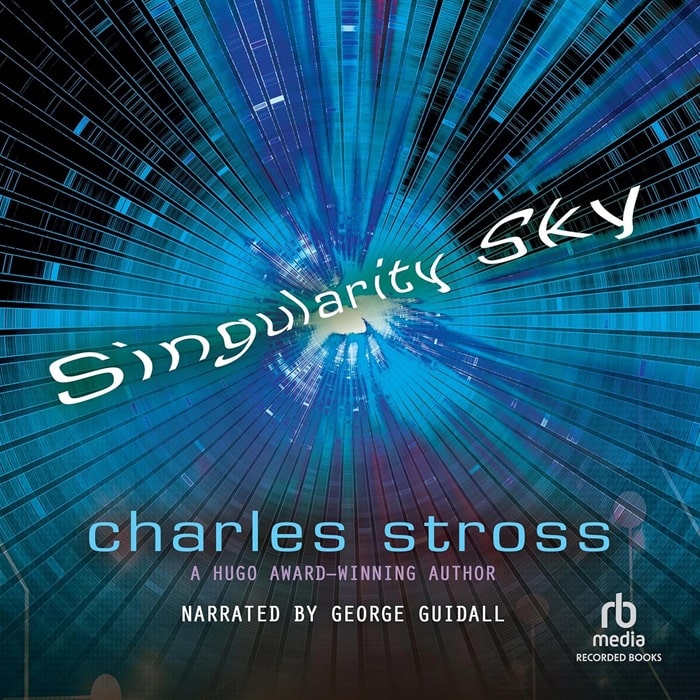 Singularity Sky audio edition (Recorded Books)
Singularity Sky audio edition (Recorded Books)
The obvious interpretation of the cornucopia machine is as a basis for a post-scarcity society. But in Stross’s narrative, it’s more like a wish-granting genie or fairy godmother — one that will grant exactly what you wish for, without protecting you against the implications of your wish! The result is that Novy Petrograd turns into a posthuman chaos filled with elements from Russian folklore (for example, an alien who arrived with the Festival travels about in a vehicle remarkably like Baba Yaga’s hut with chicken legs). The whole story thus has the flavor of a fairy tale with a cautionary moral. Indeed it’s a bit like the Brothers Grimm’s story of “The Fisherman and His Wife” in a science fictional setting.
The other major element is an exploration of the implications of superluminal travel. Stross makes a point of the conclusion from relativistic physics that going faster than light is potentially equivalent to time travel; the New Republic’s fleet sets out to exploit this as a basis for naval strategy, by sending an invading fleet back in time to before the Festival is ready for it.
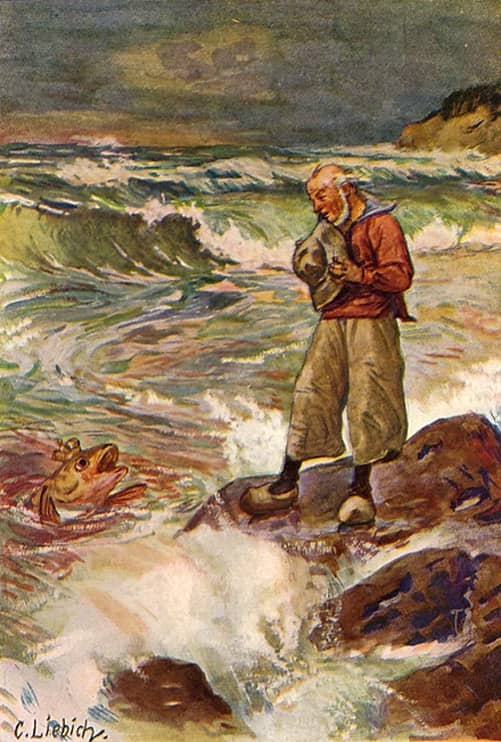 The Fisherman and His Wife (from the Brothers Grimm)
The Fisherman and His Wife (from the Brothers Grimm)
This turns out to be exactly the sort of thing that gets the Eschaton’s attention: not wanting to see anyone change the past to prevent its coming to be, it takes steps when anyone engages in time travel — and Martin is one of its agents. However, a deeper point is Stross’s skepticism about the idea that interstellar navies will also encounter other interstellar navies at the same point of development technologically; Stross has written about the Battle of Tsushima Straits as an example of what can happen when there’s even a modest technological gap between two fleets. The gap between the New Republic and the Festival is far greater. The possibility of time travel also provides an explanation for the presence of the Eschaton.
Putting all this together gives us a book that’s rich in ideas and story elements — maybe just a little too rich; the effect is sometimes confusing. Science fiction is often described as a literature of ideas; like a literary Stakhanovite, Stross seems to be overfulfilling his quota!
On the other hand, it does a very good job of the bombarding-the-reader-with-ideas effect of classic SF writers such as A.E. Van Vogt. I can certainly see why it made a big splash when Stross was starting his career.
William H. Stoddard is a professional copy editor specializing in scholarly and scientific publications. As a secondary career, he has written more than two dozen books for Steve Jackson Games, starting in 2000 with GURPS Steampunk. He lives in Lawrence, Kansas with his wife, their cat (a ginger tabby), and a hundred shelf feet of books, including large amounts of science fiction, fantasy, and graphic novels. His last article for us was a review of St Trinian’s: The Entire Appalling Business by Ronald Searle.
Audiobook Review: Beautiful Ugly by Alice Feeney
I received a review copy from the publisher. This does not affect the contents of my review and all opinions are my own.
 Beautiful Ugly by Alice Feeney
Beautiful Ugly by Alice Feeney
Mogsy’s Rating (Overall): 3.5 of 5 stars
Genre: Thriller, Mystery
Series: Stand Alone
Publisher: Macmillan Audio (January 14, 2025)
Length: 9 hrs and 19 mins
Author Information: Website
Narrators: Richard Armitage, Tuppence Middleton
In Alice Feeney’s Beautiful Ugly, a couple’s life is abruptly turned upside down when a celebrated author’s wife mysteriously vanishes. The book opens as Grady Green anxiously paces his home, waiting for good news from his publisher. He phones his wife, Abby, wondering where she is. It’s an important night, he tells her, and he wants her there with him when the call comes. Abby is happy and excited for him, assuring him that she’s on her way back to the house. But that’s the last he hears from her. Their call is abruptly cut off, and later, Abby’s car is found abandoned at the side of the road. Of Grady’s wife herself, there is no sign.
A year later, still distraught over Abby’s sudden disappearance and unanswered questions, Grady is suffering from writer’s block. Desperate to meet a deadline, he listens to the advice of Kitty, his agent who was also Abby’s godmother, and travels to the isle of Amberley for a new change of pace and scenery. Situated off the coast of Scotland, the lonely island is far from the distractions of civilization and offers the solitude required for a writer’s retreat. Grady settles into a recently vacated cabin, which used to belong to another famous author, and hopes that its creative energies will inspire him too.
However, Amberley is full of its own secrets. Years of living in seclusion have also made the island’s residents an eccentric bunch, and not all are happy about the new arrival. Grady starts receiving anonymous messages whose contents are ambiguous and not entirely welcoming. His life suddenly takes another unexpected turn when, following a near-miss incident on a road, he meets a woman who looks exactly like Abby. In fact, it could be Abby, were it not for her different colored eyes and the fact that Grady is a complete stranger to her. But if she is not his wife, then who could she be?
With six books by Alice Feeney under my belt, I’ve come to notice a pattern: her novels tend to feature premises that sound more exciting than they actually are. Case in point, her stories often open with fascinating setups that immediately grab your interest, but the execution doesn’t always live up to the initial pitch. After a while, the narrative starts giving way to familiar tropes or gradually loses the spark that made the beginning so alluring, and truth be told, I think Beautiful Ugly followed a similar trajectory. At some point, it occurred to me that the mystery of Abby’s disappearance might have even been overshadowed by the story’s meandering.
And yet, Feeney does have a way of keeping me entertained. Her sharp prose and skills as a storyteller keep me coming back, because while Beautiful Ugly does demand a fair bit of patience, it is still undeniably intriguing. No matter how insignificant the details may seem, in the end they contribute to a larger puzzle. This is how the author’s stories capture the imagination of her audience. From the get-go, you know something is terribly wrong, and even as the plot trundles its way through doling out even more questions than answers, you can’t help but be drawn into the book’s psychological games.
Grady, for instance, is the perfect unreliable narrator. As his confusion and emotions grow heavier, it makes perfect sense to question everything he sees and hears. A place like Amberley also adds ambiguity to the mix, with its brooding atmosphere and tight-knit insular community of just a few dozen people. Every interaction is a potential clue, but further muddying the waters are the locals’ secrets and motives, not to mention Grady’s own paranoia.
The ending eventually steered things back to the main mystery at hand, but admittedly, the reveals were a bit farfetched, and the conclusion carried an anticlimactic tone that left me feeling like the payoff didn’t match the promise of the initial hook. However, Feeney takes a bold risk with the final twist, and for readers who enjoy these kinds of over-the-top bombshells, they might find it enhances the experience by providing a counterbalance to the novel’s more emotional and grounded themes.
Audiobook Comments: I always love listening to Alice Feeney’s books in audio since they are often narrated by the wonderful Richard Armitage. Beautiful Ugly featured his exceptional voice work, alongside a few chapters read by Tuppence Middleton. Together, their voices brought the story to life and were remarkably on point at capturing the required emotional depth and heartbreak.
![]()
![]()
Comment on A Beginner’s Guide to Drucraft #28: Motion Essentia by Bill
Thank you for the overview of Motion Essentia. There are some useful features there, pity that Stephen isn’t going to be able to use his skills in this area (or have a hard time if he does!). Maybe House Ashford could fund a Sigl or two?
Mihir's Top Reads of 2024
 Last year I wasn’t able to post my top
reads but I was reminded that there are a few readers who are keeping their eye
out for it (thanks Pradeep). So this year I wanted to be sure to not be lazy. 2024
was a varied reading year with a wide variety of epic fantasy. Infact my top 7
are indicative of how rich the stories were
and it wasn’t easy ranking them.
Last year I wasn’t able to post my top
reads but I was reminded that there are a few readers who are keeping their eye
out for it (thanks Pradeep). So this year I wanted to be sure to not be lazy. 2024
was a varied reading year with a wide variety of epic fantasy. Infact my top 7
are indicative of how rich the stories were
and it wasn’t easy ranking them. So without further ado, here are my top reads for 2024:

1) The Storm beneath The World by Michael R. Fletcher – This was an incredibly unique story about an anthromorphic insect civilization & easily the best story that has sprouted form the mad Canadian’s mind. Can’t wait to read the sequel and see how Fletcher ends it all.

2) The Doors Of Midnight by RR Virdi – The sequel to The First Binding was in everyway a sequel that outshone its predecessor. The brilliance of the author’s prose & plotting skills were already visible in the preceding title but in this one, he took things to a new level. The 3rd volume in the Tales Of Tremaine is easily one of my most anticipated reads whenever it releases.

3) Herald by Rob J. Hayes – The beginning of a new epic fantasy from one of my favourites is always a cause to celebrate. With the Godeater saga, Rob plans to go the GRRM route and has written a story that is simultaneously unfolding across three millennia.

4) The Last Shield by Cameron Johnston – Cameron Johnston is a huge fan of David Gemmell and in this book, he was able to give us a heroic fantasy story & a stoic female MC who absolutely would have done the big man proud.

5) Blood Over Bright Haven by M.L. Wang – This book was a fantasy title that originally was released in 2023 but I got to it in 2024. M.L. Wang’s BOBH was a fascinating tapestry about academia, racism and xenophobia while giving us a fascinating world. An incredibly different follow up to Kaigen but retaining all of the author’s signature style.
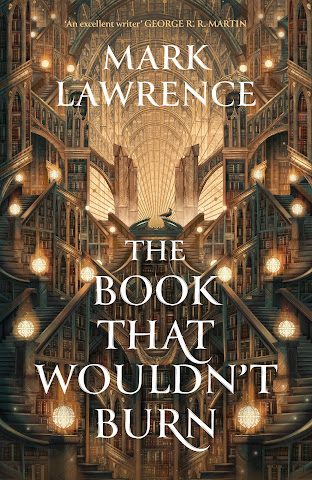
6) The Book That Wouldn't Burn by Mark Lawrence – This was another 2023 title which I was only able to read a year later after its release. The Library trilogy book 1 is possibly the most meta story that Mark Lawrence has written & another feather in his already shining cap.

7) Fool’s Promise by Angela Boord – Angela Boord’s 2nd volume of the Eterean saga showcased exactly why we loved Fortune’s Fool. With more worldbuilding & complex characters, accompanied by stellar prose, this sequel proved why AB needs to be celebrated by more readers.

8) How To Become The Dark Lord And Die Trying by Django Wexler – This was a funny story that exceeded my wildest expectations as the author really went all in with its zany premise. Filled with snark, humour & a lot of fun, this is one series that I couldn’t get more of.

9) Mushroom Blues by Adrian M. Gibson – Adrian M. Gibson’s debut was a sleek hybrid mixing fantasy, SF, & Noir with a complex world scenario. It was also very polished & hence was the FBC finalist for SPFBOX. If you haven’t read this one yet, you need to jump on it.

10) The Hunter’s Gambit by Ciel Pierlot – I was made aware of this book thanks to my blogmate Caitlin, and her review precisely encapsulates what this book is about. Evil vampires, bloody action, a morally grey protagonist made this standalone a quick and fast read. Ciel Pierlot absolutely nailed this dark fantasy tale & I hope we get more stories within this milieu.
Prehistrionics, Part II
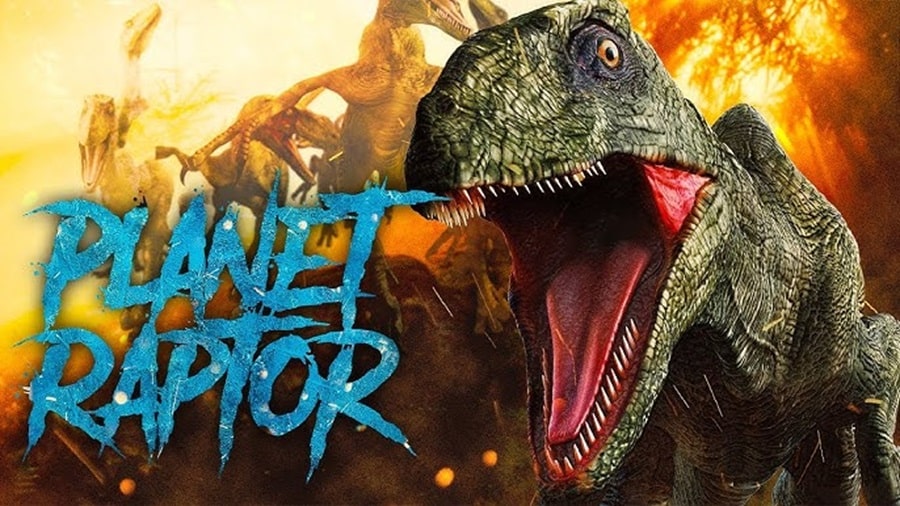 Planet Raptor (Syfy/Apollo Media, 2007)
Planet Raptor (Syfy/Apollo Media, 2007)
We’re off on another adventure filled to the brim with disappointment. 20 films I’ve never seen before, all free to stream, all dinosaur-based.
Oh god.
Planet Raptor (2007) TubiJust how bad is the CG? Horrendous.
Sexy scientist? Yep.
Mumbo jumbo? Alien termite Ren fair raptors.
I got tricked by seeing a couple of names I recognized (Steven Bauer, Ted Raimi, Vanessa Angel) and ended up hate-watching this exercise in dull stupidity. A sequel to the possibly worse Raptor Island, this one pits a platoon of inept space marines against a medieval planet full of dinosaurs, lovingly rendered using PS2 graphics.
There’s some practical gore and a couple of puppet raptor close-ups that aren’t terrible, but the plot is as dumb as a wasp enema and the acting is limper than a Taco Bell lettuce shred. Angel, as Dr. Zipper McBlankstare, does nothing, and Raimi skulks around as suspiciously as he can muster. The rest of the red shirts make poor decisions and die by being nudged to death with rubber snouts.
Rubbish.
3/10
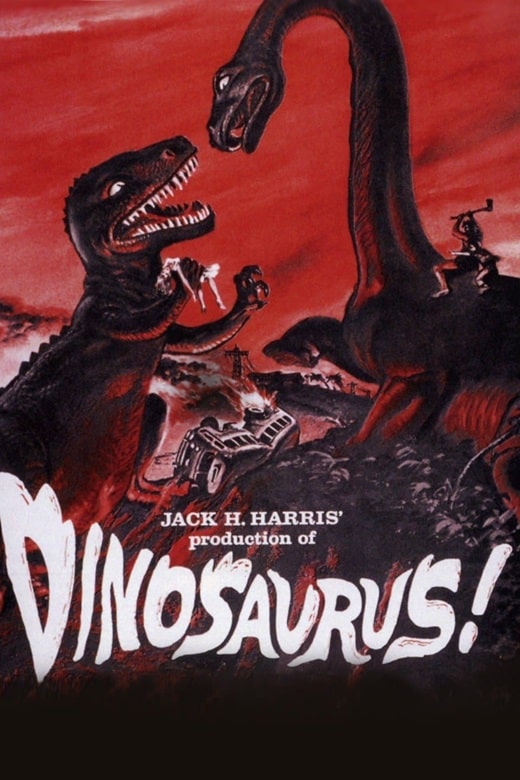
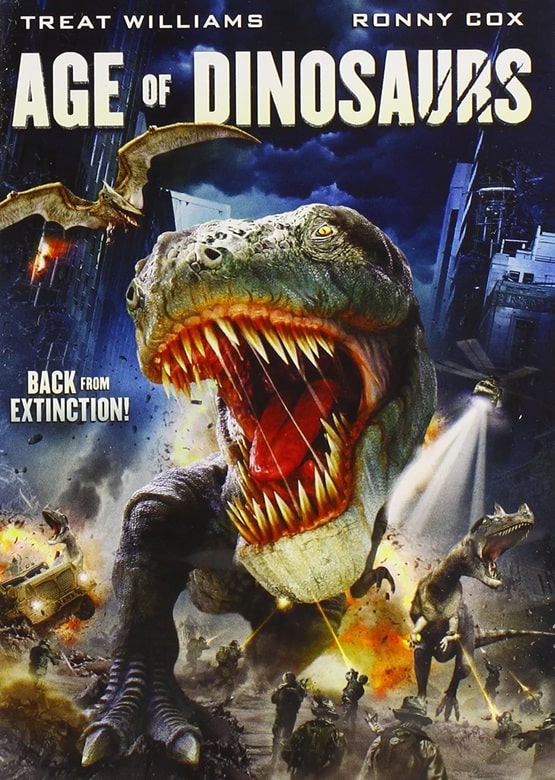
Dinosaurus! (Universal International, 1960), and Age of Dinosaurs (The Asylum, 2013)
Just how bad is the CG? No CG.
Sexy scientist? Nope.
Mumbo jumbo? Reanimated dinosaurs, caveman.
A gently bonkers entry in the ‘small child befriends giant monster’ genre, Dinosaurus! tells a simple story (island construction wakes up some beasts and a caveman) and liberally sprinkles in every racial stereotype you could imagine. Par for the course for a sixty year old flick, so I’m not complaining. The caveman is played fully for comic relief and the dinosaurs, a wrongly named Brontosaurus and a T-Rex, are charming puppets for some of the film, and charming stop-motion for the rest. It’s all rather charming. 60% daft, 40% dull, 100% perfect rubbish.
6/10
Age of Dinosaurs (2013) YouTubeJust how bad is the CG? A couple of half decent shots.
Sexy scientist? Nope.
Mumbo jumbo? Genetic clones.
Treat Williams and Ronny Cox are the genre veterans that might have possibly saved this, but the dodgy dinosaurs, spotty acting and clunky direction relegate it to the C-list. The multitudes of monsters are mostly rendered in weightless CG, but there are a couple of puppets used early on that are not at all bad, and the filmmakers certainly had some bronto-balls to try to pull off some bold set pieces. Ultimately, it’s not great but it’s loud and daft, and that’s all I’m asking for at this point.
6/10
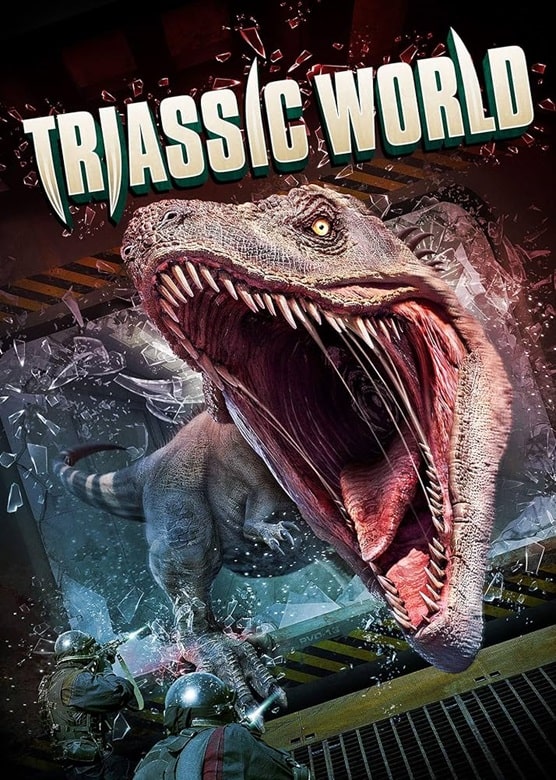
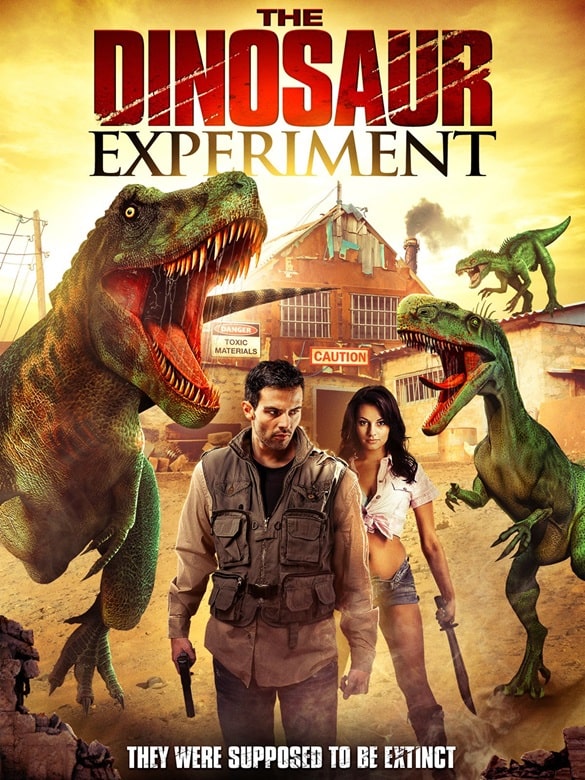
Triassic World (The Asylum, 2018), and The Dinosaur Experiment (Nu Imagination, 2012)
Just how bad is the CG? Not utterly terrible.
Sexy scientist? Yep.
Mumbo jumbo? Cloning smart dinos for organs.
Jurassic World: Fallen Kingdom was all the rage, so The Asylum stepped up to the plate with this slice of hokum. Actually, for an Asylum flick, it’s not too bad. It’s played straight and everyone in it is very earnest. It brings nothing new to the table, as various morsels find themselves trapped in a lab with a clever lizard, and they don’t take long to turn on each other. Dr. Perky McTrankdart tries to keep it all together, but some terrible decisions quickly lead to messy nom noms courtesy of the sometimes practical gojirasaurus, all shot in gory close up. I didn’t hate it.
6/10
The Dinosaur Experiment aka Raptor Ranch (2012) TubiJust how bad is the CG? Not the worst.
Sexy scientist? Nope. Sexy everything but.
Mumbo jumbo? Resurrected dinosaurs.
There are only two phrases that are able to strike terror into the hearts of B-movie purveyors: ‘horror-comedy’ and ‘Uncork’d Pictures’. For this offering, the premise is simple; gather a random collection of cartoonish stereotypes in a backwater location, and let the animals loose. By now you should know what to expect, so let’s highlight some details. The name attached to this is the stalwart Lorenzo Lamas, who did about two days of filming as an X-files type. The lead is a Grammy and Nammy nominated Native American singer, Jana Mashonee, and she’s pretty good, but she ultimately serves the same purpose as every other female character, eye candy for the redneck horndogs and frat boy cyphers.
It’s rubbish, but it’s occasionally entertaining rubbish, and I’ll take that as a win.
5/10

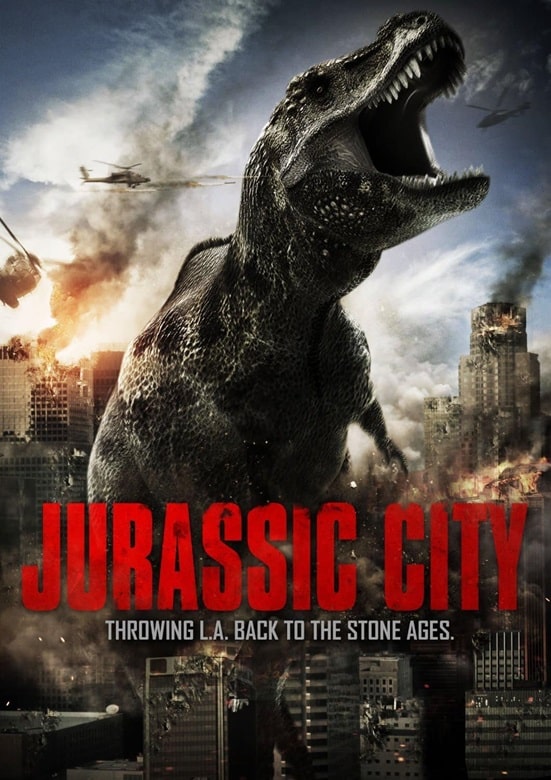
Jurassic Thunder (High Octane Studios, 2019), and Jurassic City (Vertical Entertainment, 2015)
Just how bad is the CG? Shockingly bad.
Sexy scientist? Nope.
Mumbo jumbo? Comic books, zombies, weaponized dinosaurs.
Utter shite.
0/10
Jurassic City (2015) TubiJust how bad is the CG? Pretty bad.
Sexy scientist? Nope.
Mumbo jumbo? Cloning.
Stop me if you’ve heard this: secret lab breeds dinosaurs for nefarious purposes, dinosaurs get out, inept military types try to stop them, girls in hot tubs get eaten.
Another regrettable entry in a long list of regrettable entries, JC is at least competently shot and acted (for the most part), and there are a couple of shots of dinos that almost work, but for the most part the CG is horribly lit and composited, and the over-reliance on digital blood is annoying. There was one moment when a girl in a bikini and furry vest is tripping and hallucinates a giant, glowing bunny, instead of the raptor that is about to bite her head off, that made me laugh. However, that’s the only entertaining moment in a film that asks us to root for a multiple rapist and murderer. The opening credits looked good though, so there’s that.
5/10
Previous Murkey Movie surveys from Neil Baker include:
Prehistrionics, Part I
Jumping the Shark
Alien Overlords
Biggus Footus
I Like Big Bugs and I Cannot Lie
The Weird, Weird West
Warrior Women Watch-a-thon
Neil Baker’s last article for us was Prehistrionics, Part I. Neil spends his days watching dodgy movies, most of them terrible, in the hope that you might be inspired to watch them too. He is often asked why he doesn’t watch ‘proper’ films, and he honestly doesn’t have a good answer. He is an author, illustrator, outdoor educator and owner of April Moon Books (AprilMoonBooks.com).
Challenges Faced in “Speedbumps” – Remembering The Sublime Teri Garr
In this LitStack Rec, we remember the inimitable actress Teri Garr, and recommend her memoir…
The post Challenges Faced in “Speedbumps” – Remembering The Sublime Teri Garr appeared first on LitStack.
Action, Intrigue, and Glorious Battles: William R. Forstchen’s The Lost Regiment
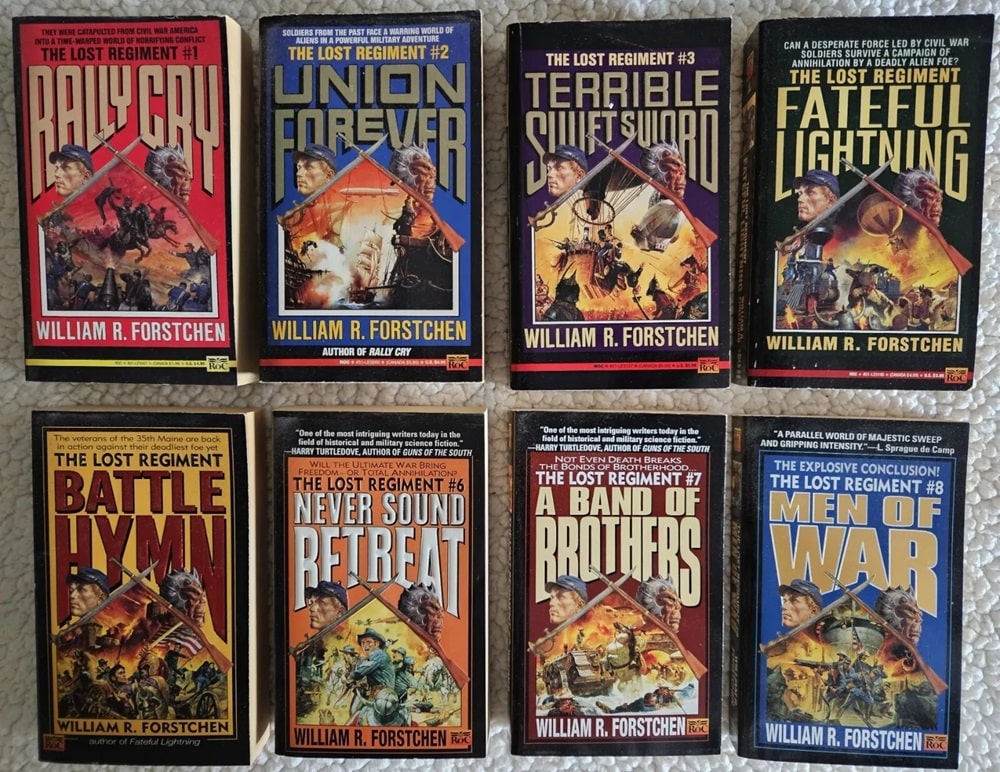 The Lost Regiment, by William R. Forstchen (Roc Books, 1990-99). Covers by Sanjulian
The Lost Regiment, by William R. Forstchen (Roc Books, 1990-99). Covers by Sanjulian
William R. Forstchen was born on October 11th, 1950, eight years and three days before my birthday. He earned a Ph.D. in history, specializing in the American Civil War, and teaches at Montreat College in North Carolina. He’s one of my favorite authors. He isn’t quite Sword & Planet but has a series that is adjacent with lots of S&P elements. It’s called The Lost Regiment and ran to 8 books. He later wrote a 9th book that took place 20 years after the end of the original series, but has not written any more.
All were published by Roc Science Fiction. Sanjulian is credited with the covers for books 6, 7, and 8, and if he did those I’m pretty sure he did all the previous ones as well, which clearly have the same style. However, book 9’s cover is credited to Edwin Herder. The Sanjulian covers are great but are quite small on the books and should have been larger.
[Click the images for regimental versions.]
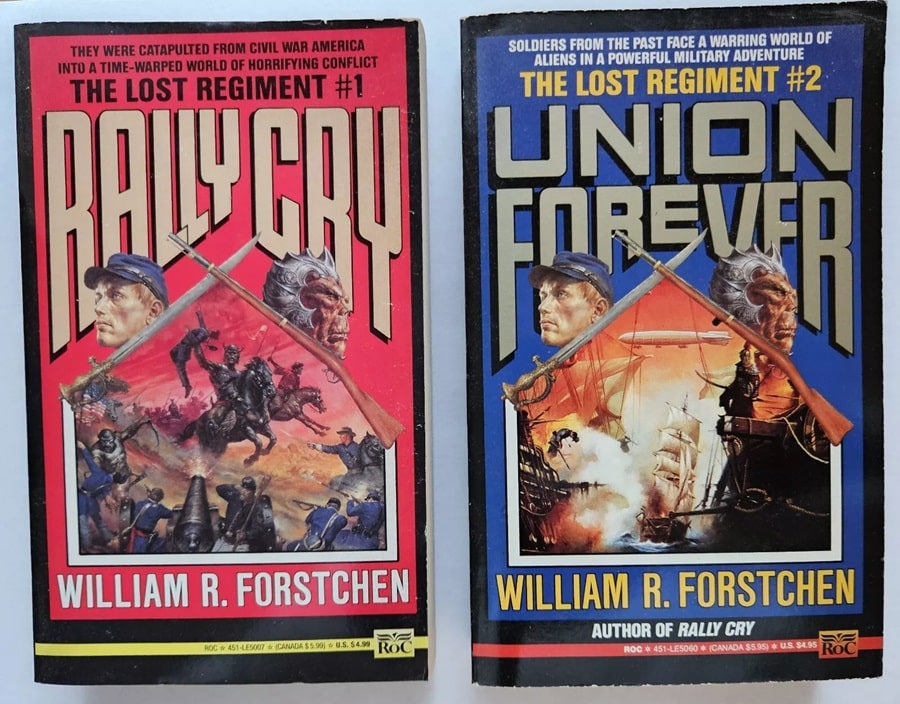
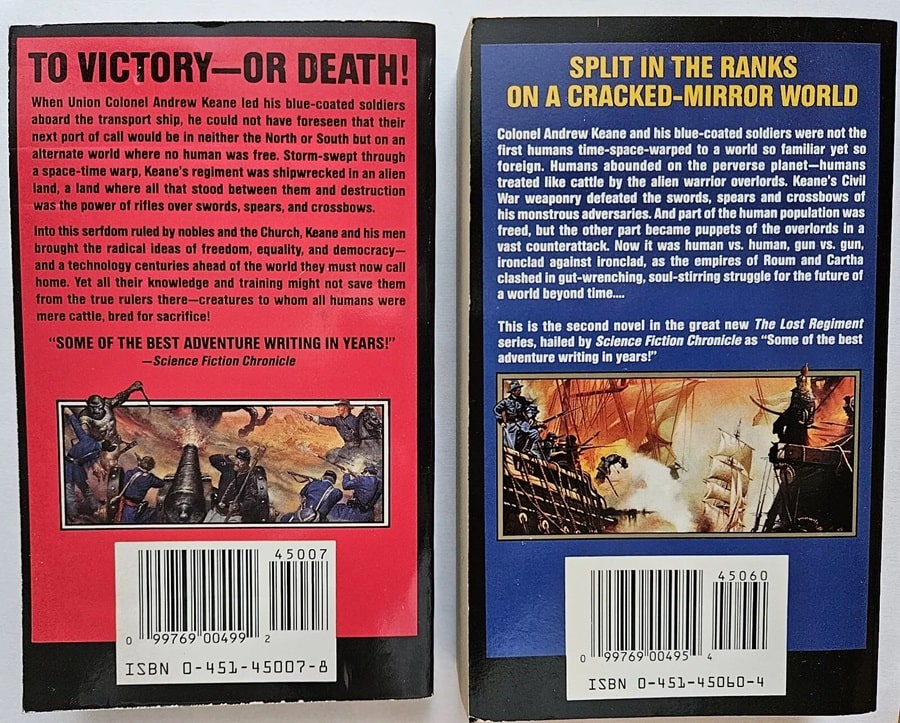
Rally Cry and Union Forever (Roc, May 1990 and February 1991). Covers by Sanjulian
The series consists of:
1. Rally Cry, 1990
2. Union Forever, 1991
3. Terrible Swift Sword, 1992
4. Fateful Lightning, 1992
5. Battle Hymn, 1997
6. Never Sound Retreat, 1998
7. A Band of Brothers, 1999
8. Men of War, 1999
9. Down to the Sea, 2000
Note: there are some mild spoilers ahead.
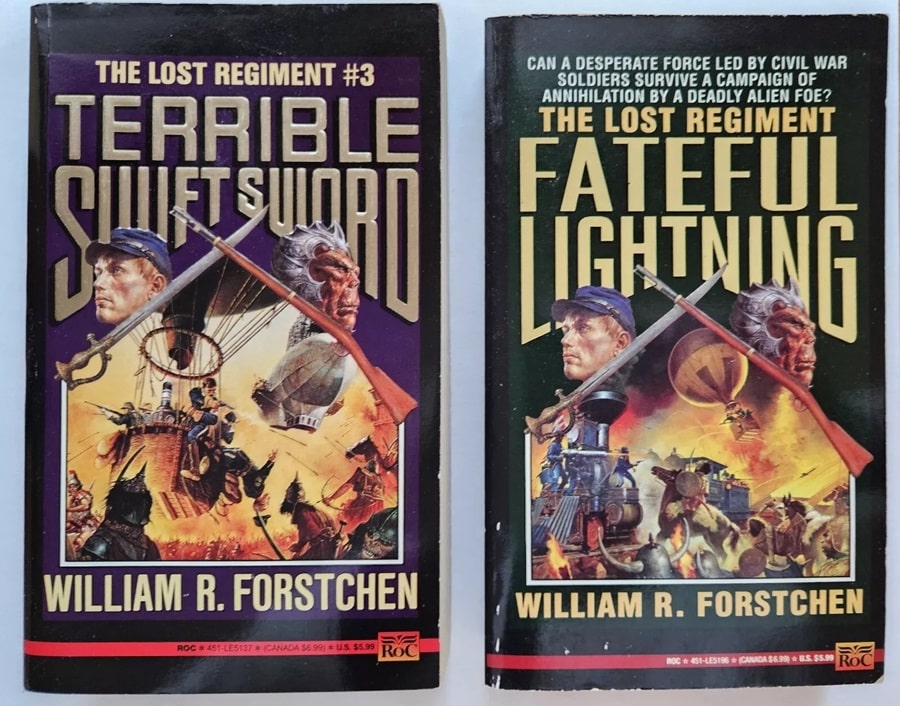
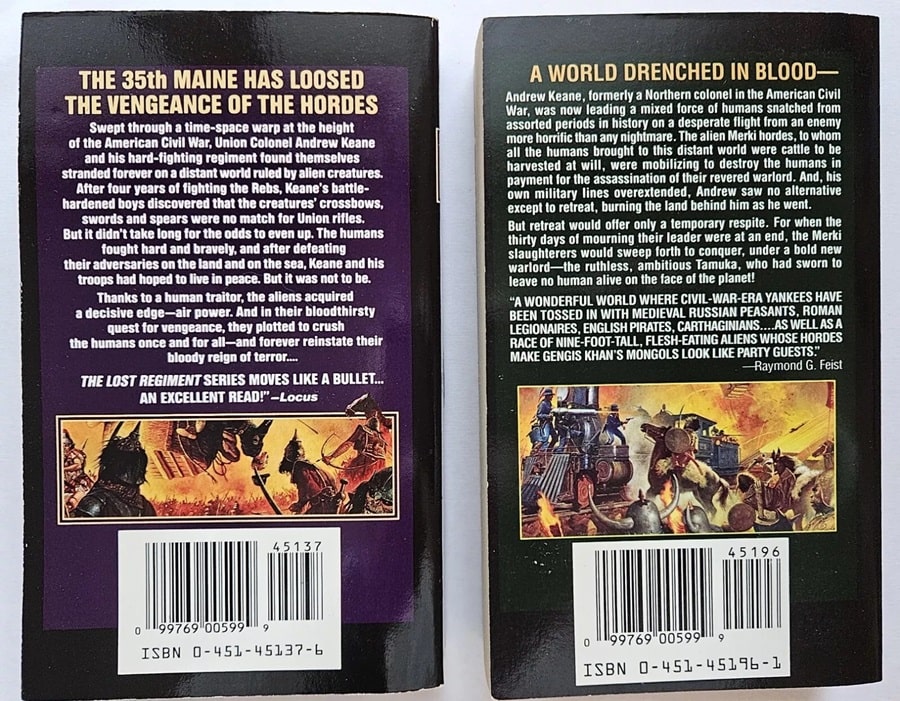
Terrible Swift Sword and Fateful Lightning (Roc, February 1992 and January 1993). Covers by Sanjulian
The first book, Rally Cry, starts out in good S&P fashion when two regiments of Union Soldiers from the Civil War board a transport ship to be taken to a battle against the Confederacy. While in the “Bermuda Triangle,” a storm hits and a tremendously bright light envelops them. They lose consciousness and wake up on another world, which they learn is called Valdennia. Other human groups have been previously transported to the world, including some Medieval Russians, Romans, and Carthaginians.
There is also an alien race of humanoids 8 to 10 feet tall and of massive build. These are called “Tugars” by most people, although we find out later there are different hordes of them. They are nomadic and ride huge horses bred from Earth stock, and use only primitive weaponry such as swords, lances and powerful bows. In fact, they reject anything resembling guns. The Tugars “eat” humans, and as they pass through the lands of human settlements they take a tithe of 20 percent of the people living there, but their territory is very large so they don’t pass too often. The Tugars also come from another world and it turns out their ancestors built the Light Gates, although the current Tugars don’t know how they work.
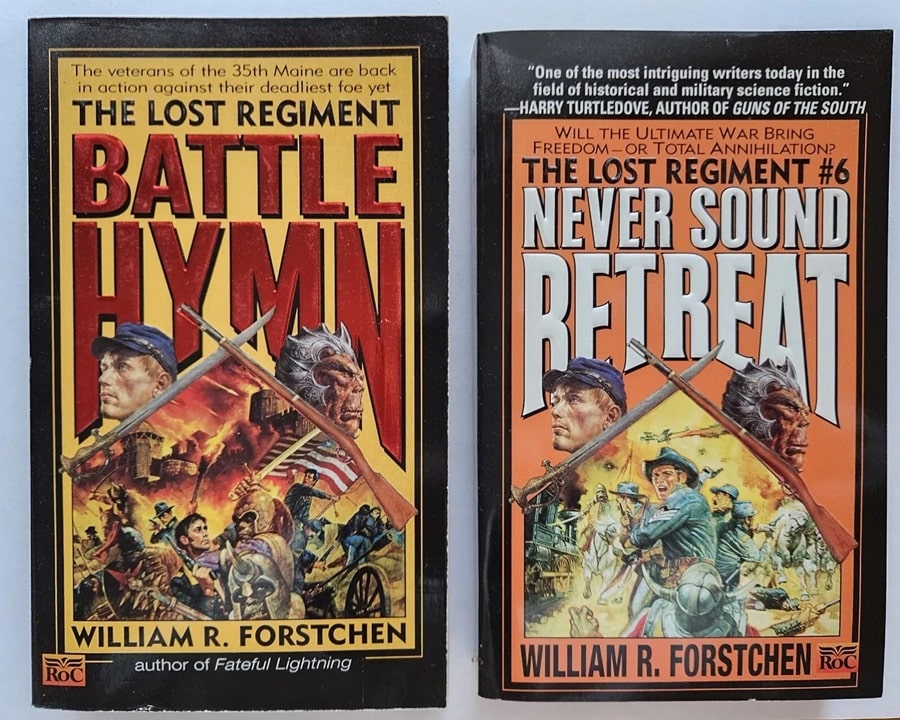
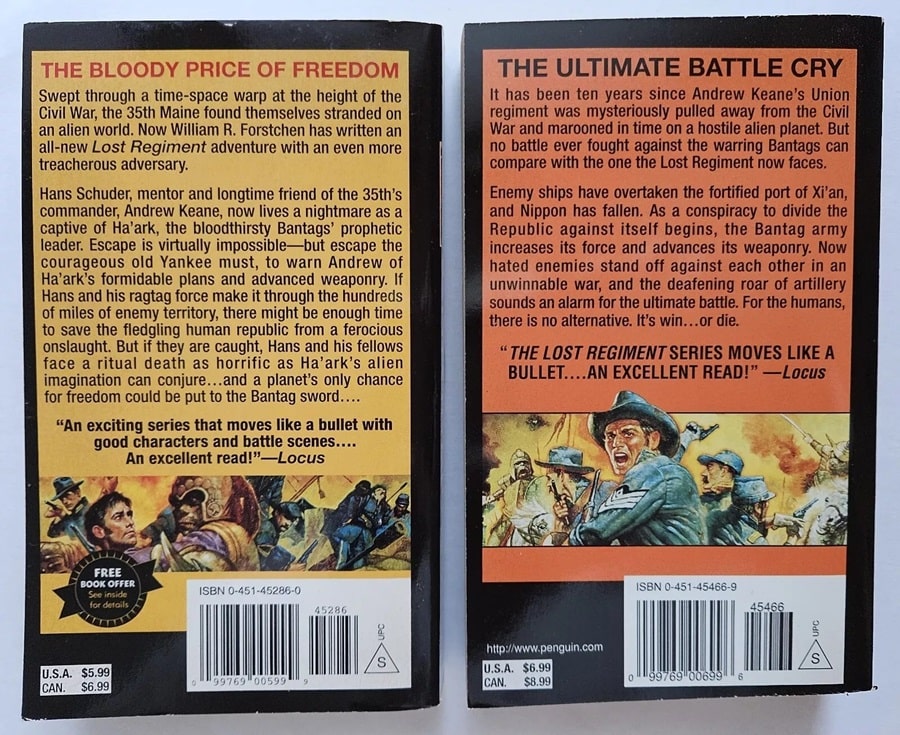
Battle Hymn and Never Sound Retreat (Roc, January 1997 and January 1998). Covers by Sanjulian
The series consists of the two Union Regiments allying with the humans of Valdennia to stop the horde. Their guns and cannon make a big difference and they decimate the Tugars. But then another horde, the Merki, step in, and behind them is a third horde called the Bantang. The Merki began to make use of gunpowder themselves and start to train human slaves to fight for them. The Union regiments and their allies must industrialize and advance in weaponry in order to survive.
These are thick books but scarcely a word is wasted. They are full of action and intrigue, but really have glorious battles. The characters are interesting and sympathetic. This was the first series like this I ever read, although a writer named Taylor Anderson, another historian, used the same concept in his Destroyermen series. I don’t believe these books would have existed without the influence of Sword & Planet works like ERB’s Barsoom tales.
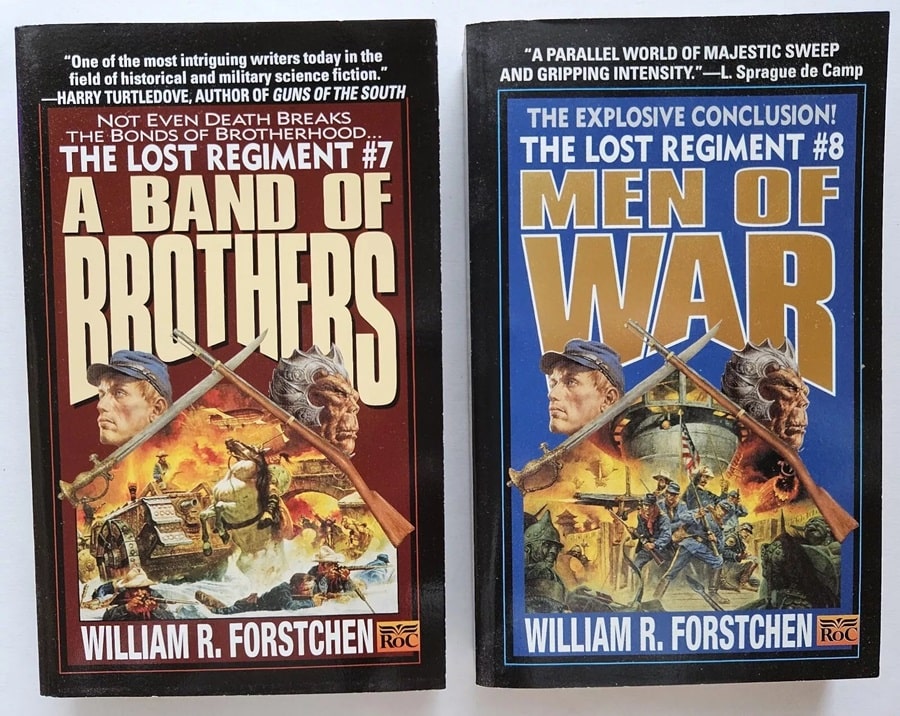
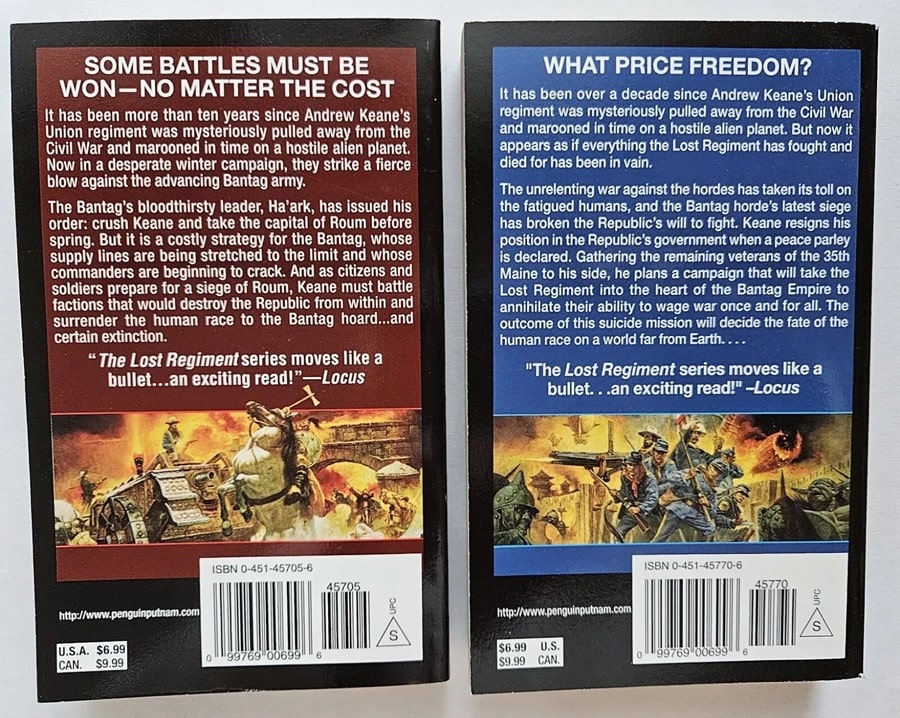
A Band of Brothers and Men of War (Roc, January 1999 and December 1999). Covers by Sanjulian
William Forstchen’s first book was published in 1983 and called Ice Prophet, with a cool cover by Darrell Sweet. It’s a post-apocalyptic fantasy set on a future, frozen Earth, similar to the setting for Michael Moorcock’s Ice Schooner. Rival religions rule the remnants of humanity but a new prophet arrives. There’s kind of a Dune vibe to the tale. It spawned two sequels but I haven’t read those. The book is good but it doesn’t have the quality of many of his later books. Forstchen’s clear strength is in using historical settings and historical types of characters.
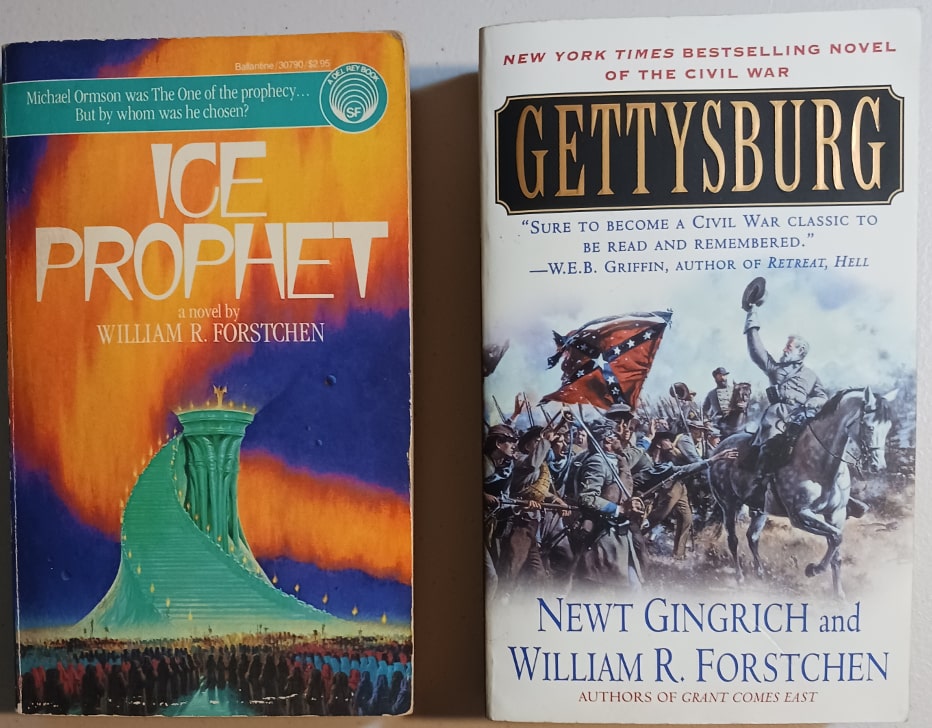 Ice Prophet by William R. Forstchen (Del Rey, August 1983) and Gettysburg by William R. Forstchen and Newt Gingrich (Thomas Dunne Books, June 2003). Covers by Darrell K. Sweet and Don Troiani
Ice Prophet by William R. Forstchen (Del Rey, August 1983) and Gettysburg by William R. Forstchen and Newt Gingrich (Thomas Dunne Books, June 2003). Covers by Darrell K. Sweet and Don Troiani
The next book I read from Forstchen after The Lost Regiment series was Gettysburg, (2003), which he wrote supposedly with Newt Gingrich. I personally don’t believe Gingrich had much to do with it. Everything in it seems to be Forstchen through and through, and there are even some characters and situations that are virtual rewrites of scenes from The Lost Regiment series. It was very good and there are two sequels that I will likely read at some point. Forstchen can really capture the heroism of men at war. The excellent cover is by Don Troiani.
He started a trilogy in 2009 with One Second After, followed by One Year After in 2015 and The Final Day in 2017. I actually suspect he meant the first book to be a standalone but it was so popular he came back to write two more some six years later. One Second After is one of the most memorable books I’ve ever read. I literally wept at the end.
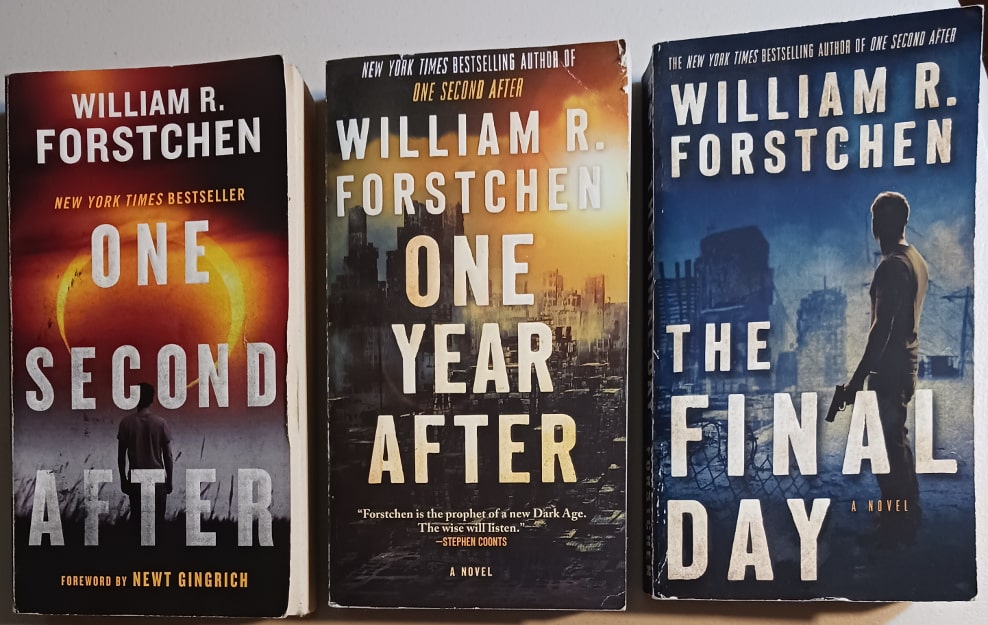 The One Second After trilogy: One Second After, One Year After, and The Final Day (Forge, March 2009, September 2015, and January 2017). Cover art: Trevillion and Thinkstock
The One Second After trilogy: One Second After, One Year After, and The Final Day (Forge, March 2009, September 2015, and January 2017). Cover art: Trevillion and Thinkstock
The two sequels are not as strong and are a little wordy in places, but they are still very good reads. The basic premise is what happens to a small town and its people after an EMP attack (electromagnetic pulse) on the US that wipes out all our electricity, bringing down our entire economy. This certainly isn’t the first time this kind of phenomenon has been used in fiction. S. M. Stirling’s Dies the Fire series posits a strange even that stops all electricity from working worldwide.
But Forstchen’s take is very well done and — I think — gives a pretty realistic, though perhaps optimistic view of what would happen. It chronicles the attempt by this one small town to hold onto their civilization and their humanity. One Year After looks back at the same folks a year later, and The Final Day takes place after a more general recovery has begun but is being corrupted from the inside.
Quite possibly because of his association with Newt Gingrich, who wrote the Foreword of One Second After, Forstchen has been criticized for holding overly right-wing views. After reading many of his books, I do believe that he is probably a political conservative, which I am not. However, his views seem nuanced to me. What he has created are very real seeming characters who hold certain conservative viewpoints. I know and get along with plenty of people who share such viewpoints and I would not consider them to be “right-wingers” in the pejorative sense of that word. Ultimately, these are good stories.
Charles Gramlich administers The Swords & Planet League group on Facebook, where this post first appeared. His last article for Black Gate was The Sword & Planet Fiction of Robert Moore Williams.
A Fool
I’m typing this on my new Goldtouch keyboard, and so far I don’t like it. I like how the keys feel, but this one doesn’t come apart. It splits, and I can’t seem to find a comfortable position with it. The ergonomic mouse, however, is a dream.
In the news interesting to nobody except my family, my bloodwork came back and my A1C is 5.5. I’m officially in the normal diabetic range. I did a little dance to my husband’s amusement.
I’m still having trouble really revving my writing engine up. It takes a little bit to slide back into writing full speed mindset and it’s a little elusive at the moment. But a friend sent me a rumor that apparently we are not working on Hugh 2 and the prologue was a fake out somehow. I love you, BDH. Never change!
 Chapter 1
Chapter 1
Hugh D’Ambray, Preceptor of Iron Dogs, former Warlord of the Builder of Towers, and Savior of Aberdine, stared through the window of his study and brooded.
He was on the fifth floor of the main keep, a hundred-foot-tall square tower that anchored Baile Castle to the top of the hill. The keep had a crenelated turret on each corner. He was in the southeastern turret now, standing by a small desk he’d brought there a month ago.
His new study had two windows. The left presented a beautiful night landscape of the castle grounds, the sloping hill, and the dense, dark woods stretching as far as the eye could see, the kind of old growth forest that Kentucky hadn’t seen for centuries, fed by the magic waves that flooded the world without warning. The right window offered him the view of the southwestern turret.
The night came quickly at the end of November, the sky a deep indigo studded with an occasional star. The moon was out, full and pale like a coin in the sky, and its light snagged on the pale stone of the castle. The magic had retreated three days ago and was yet to return, and the turret’s arched window glowed with warm electric light. He could see a small desk with a stack of papers on top of it and a chair.
The harpy wasn’t in it.
His wife was a creature of habit. For three weeks he watched her enter the study at around 8:00 pm, sit in that chair, and then work for at least an hour. Sometimes she read reports. Sometimes she wrote. Occasionally she puttered around with some herbs or did other witchy things, but no matter what else happened that day, he could count on seeing her white hair and her profile in that window. It had become a habit. He would work at his desk, she would work at hers, and once in a while he would glance up and see her there. He liked knowing where she was.
On Monday, when Elara wasn’t at her desk, he didn’t worry. Occasional deviation from routine was normal. On Tuesday, she wasn’t at her desk again. On Wednesday, she wasn’t there either.
Something or someone was keeping her from her desk.
Yesterday, after waiting for half an hour, he thought of an excuse, marched down the long hallway separating their quarters, and knocked on her door. She met him at the doorway and didn’t invite him in. He made an ass of himself, hoping to irritate her enough so she’d slip up and give some hint as to what she was doing, but she just shut the door. He learned nothing.
It was Thursday now. The chair was empty.
There was a textured ledge running just under his window all the way to the other turret. It was 20 inches deep.
If she had someone in there with her who was keeping her occupied, he would have no way of knowing. He had kept his main door open since Tuesday night, but he didn’t hear anyone come up the stairs and parking himself in the doorway to watch the approach to her rooms would be too obvious.
Hugh unlatched the window. It swung inward and the cold air hit him. He crouched on the windowsill, grabbed the edge of the window, and stepped onto the ledge. Below him, the hard stones of the bailey were barely visible in the gauzy moonlight. If he slipped, the trip down would be short and brutal.
He pressed his back against the stone and took a sideway step toward the other turret.
Step. Another. The turret didn’t seem any closer.
He was a fucking fool.
Happy Friday!
The post A Fool first appeared on ILONA ANDREWS.
New Turkish translation of Swan Song
Ithaki Publications in Turkey is releasing Kuğu Şarkısı, their Turkish translation of Swan Song, on January 16, 2025! They acquired the rights in 2020, and they previously published Boy’s Life in 2022. Both books were translated by Esat Ören. The cover has been added to the Book Cover Gallery. Thanks to Turkish reader Ahmet Okan for the heads-up!
Swan Song fan art by Audrey Brunner
Taylor Swift Reading Challenge 2025
 I don't think I'll actively hunt down books that fit here, but it might be fun to see if my reading fits these.
I don't think I'll actively hunt down books that fit here, but it might be fun to see if my reading fits these.Goth Chick News: Celebrating Our 666th Black Gate Article with an Exclusive Announcement
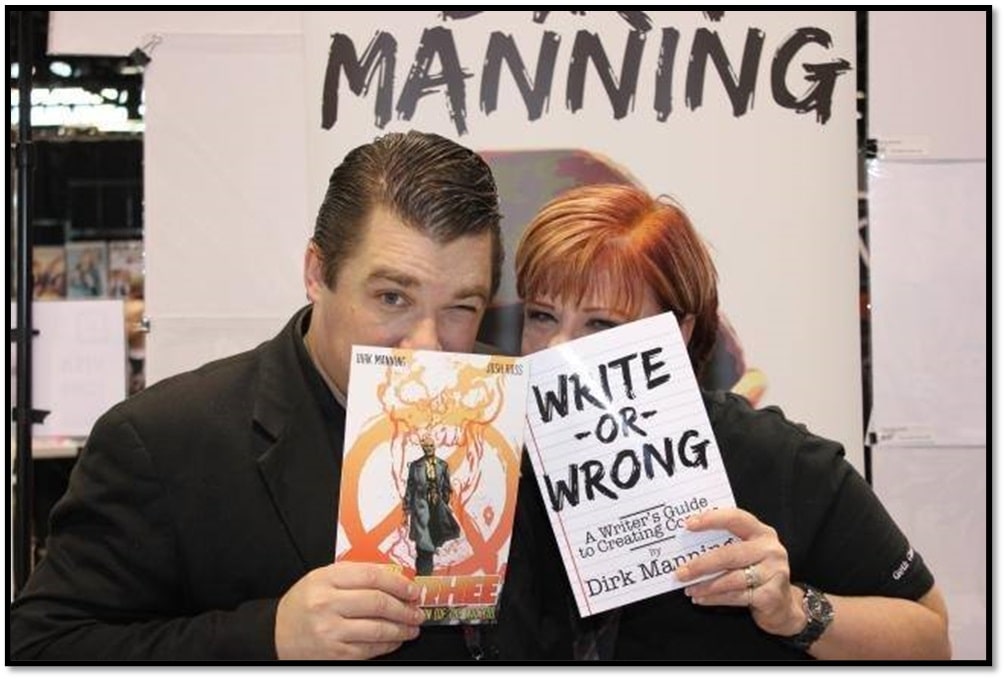 Dirk and yours truly, Chicago Comic and Entertainment Expo 2014
Dirk and yours truly, Chicago Comic and Entertainment Expo 2014
A couple years back, my long-time friend comic writer/creator Dirk Manning called dibs. He let me know that when the time came for me to publish my 666th article for Black Gate that he wanted to be my subject.
I first introduced Manning to all of you in 2011 during his nationwide tour promoting his horror comic series, Nightmare World. As a fan of horror comics since they were contraband for my young self, I loved how Manning’s work reminded me of everything I enjoyed about the genre. His most recent project has been a collaboration with the estate of legendary actor Lon Chaney to bring the lost classic horror film London After Midnight back to life in graphic novel form. Since 2011, Manning has made multiple appearances in GCN marking his many projects and his ever-growing fan base.
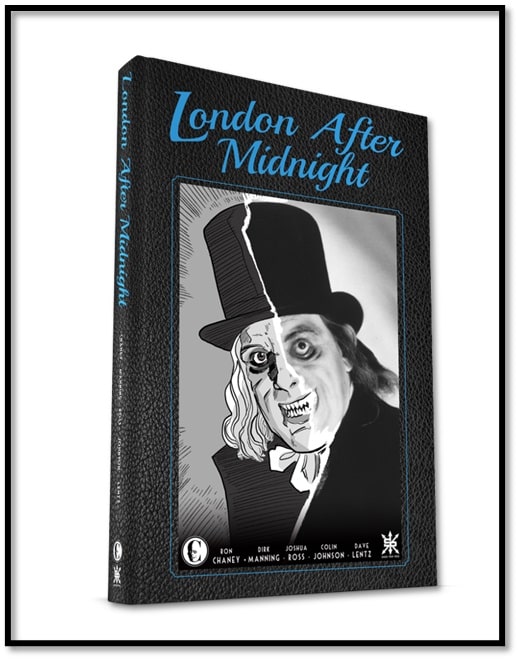 London After Midnight: The Official Graphic Novel Adaptation by Ron Chaney, Dirk Manning, Joshua Ross, and Colin Johnson (Chaney Entertainment and Source Point Press, 2025)
London After Midnight: The Official Graphic Novel Adaptation by Ron Chaney, Dirk Manning, Joshua Ross, and Colin Johnson (Chaney Entertainment and Source Point Press, 2025)
However, laying claim to a Goth Chick New milestone article would require a monumental announcement, and Dirk promised to deliver. Our agreement included holding this news until early January 2025 due to various NDAs, which in turn meant a lot of leeway from BG Big Cheese John O allowing me to skip writing on various weeks throughout 2024, enabling my 666th GCN to align with Dirk’s timing.
So, without further ado, allow me to present Goth Chick News’ 666th article for Black Gate Magazine.
Buckle up readers, here we go…
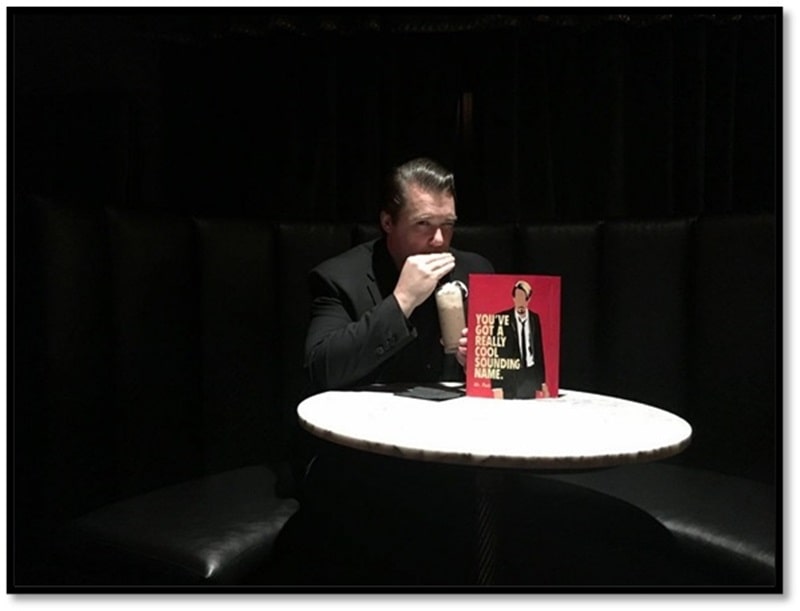 Dirk Manning
Dirk Manning
GC: We are sitting with Dirk Manning and Josh Malerman, New York Times best-selling author of Bird Box and Incidents Around the House for an exclusive about their upcoming collaboration. Tell us how you came to partner up for this exciting new graphic novel RSVP E.S.P.?
DIRK MANNING: Thank you so much for allowing us to give you this Black Gate exclusive interview about this project! We’ve both been waiting to be able to talk about this new graphic novel for a while now! As for how it started, I first met Josh Malerman after a mutual friend at the time foisted a copy of Bird Box into my hands, citing that he thought it would be up my alley as a fellow horror writer. This was back in late 2015, well before the movie and the following cultural phenomenon surrounding it had happened, so I went into it fairly blind, intrigued by the Lovecraftian concept of a creature that drove you mad the moment you made eye contact with it. Well, once I started the book, I legitimately had a hard time putting it down, and upon finishing it I was so blown away that I circled back and asked if I could meet Josh, just to tell him face-to-face what a fan I was of the book. I was genuinely already a super-fan, ha-ha! The meeting happened over a hot dog and tacos dinner on February 12th, 2016, and I immediately became a fan of Josh as a person that night, too… and we’ve remained both colleagues and pals ever since.
 Josh Malerman
Josh Malerman
JOSH MALERMAN: The older we get (and none of us are that old), the more I understand how rare it is to become immediate friends with someone. Not because any of us are so cynical, but because we’re busy, because we have friends, because we have passions and we’re spending so much time with those. But when it does happen, when you cross paths with someone who is either in your field or doing what they do for the same reasons you are… it’s impossible to miss. I think it took all of ten seconds for me to recognize an immediate friend and like-minded soul in Dirk Manning. The way he presented himself, his work, the people in his life… his sense of humor, his tastes, his intelligence… it was all on display in everything he says. I knew right away I wanted to work with him on something. What that was wouldn’t present itself for a minute… and once it did, it was clear as day.
DIRK: Fast forward to September 2022. By this point Josh had released several more books and had achieved well-earned superstardom as one of the best horror novelists of this generation (at least), and I had recently taken a position as Special Projects Manager with Michigan-based comic publisher Source Point Press. This meant, along with publishing my own creator-owned work, I was shepherding projects with various high-profile talents outside the world of comics, such as musicians Twiztid and Blaze Ya Dead Homie and professional wrestling personalities Tony Schiavone and Arn Anderson… so the idea of bringing Josh Malerman into the fold in a similar fashion was of course a no-brainer to me. Well, Josh always does these cool book release party events for his novels, and for Daphne the event was taking place on a high school basketball court since the main character was a high school basketball player. How cool, right? Given the setting – and despite my lack of sport skills – I decided to ‘shoot my shot’ on this, asking him – literally on the court in front of the hoop (where we was nailing several free throws, I might add), ‘Hey, have you ever thought about writing a graphic novel?’ Without missing a beat he immediately fired back ‘Only if you’ll write it with me.’”
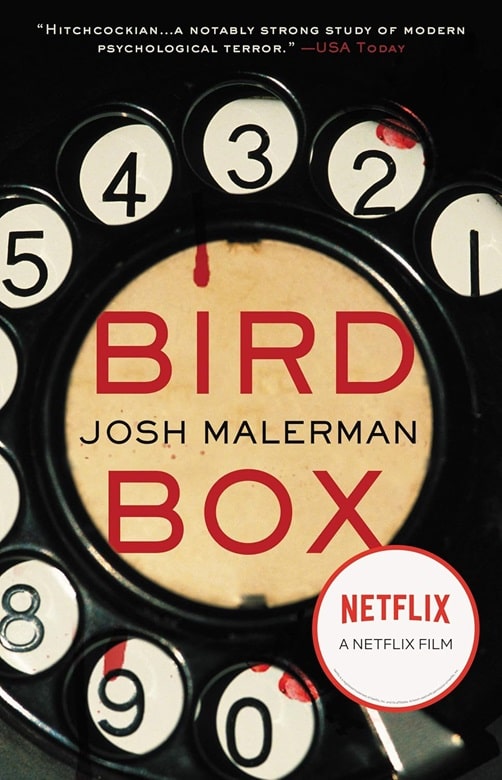 Bird Box (Ecco, February 10, 2015)
Bird Box (Ecco, February 10, 2015)
JOSH: I have a long history of collaborating with my fellow bandmates in The High Strung. For years now, Mark and I write the songs, then we hand them over to the band and they make their music. We don’t tell them what to play. That would be counterintuitive to everything fun about the process. When the movie Bird Box was made, I felt I’d written the song (the book) and then Netflix and Sandra Bullock made their music. Fantastic. Perfect. So! When Dirk asked about working on a graphic novel, I immediately thought: “omg yes.” I had a story idea that I hoped would work, we talked about it some, and then Dirk… well, then Dirk made his music.
DIRK: After mulling things over a bit, Josh presented me with a story idea originally titled Two Gods in the House (and since renamed RSVP E.S.P. – which is a story in itself for another time, haha!) about a scientist who invites two potentially psychic children into his house to prove the existence of psychic powers… not realizing how powerful they really are or what he’s in for by doing so. He expressed to me that, while he loved the story (and rightfully so, as it was amazing) that he couldn’t quite make it work as a prose novel. Upon reviewing everything he gave me, I told him what I saw as both an obstacle and an opportunity: “I can see why, dude: This is a story that needs to be told visually.”
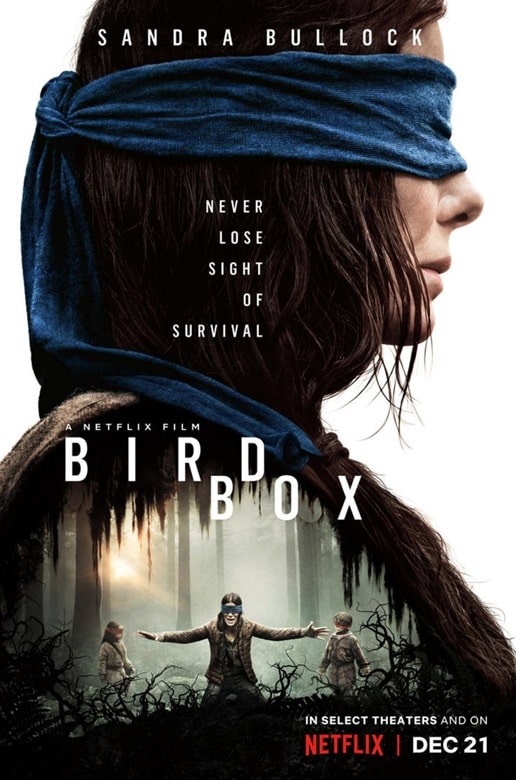 Bird Box (Netflix, December 14, 2018)
Bird Box (Netflix, December 14, 2018)
JOSH: I think it took somebody who worked in a more visual field to point out to me that RSVP E.S.P. was born to be a visual story. Everything about it was cinematic, to be seen, to be felt, and I’d been wrestling with it on a description level for that very reason. Think of your favorite scenes in a movie, the ones that move you to tears… often they are a simple change in somebody’s expression, a change in light, a change in color. Dirk saw this straight away in the story. He knew the arc, the peaks, the rhythm… but also… he knew the illustrator. This led to an incredible night at my house, in which Dirk, illustrator Joshua Ross and myself essentially cut the ribbon, slammed the shovel into the ground… we broke ground that night on the graphic novel. It was absolute magic.
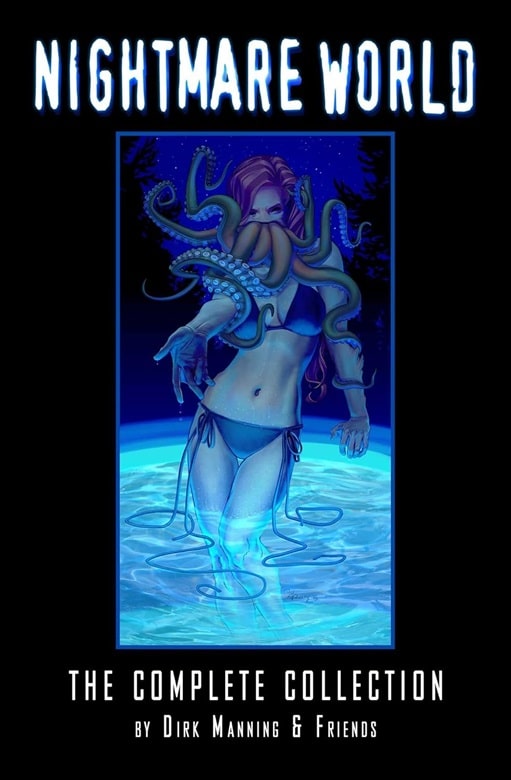 Nightmare World: The Complete Collection (Source Point Press, May 21, 2024)
Nightmare World: The Complete Collection (Source Point Press, May 21, 2024)
DIRK: From the beginning of the process, I knew only one illustrator could possibly do RSVP E.S.P. justice as a graphic novel, and that illustrator was Joshua Ross. Joshua had been one of my longest artistic collaborators in comics for my 20+ year career, stemming all the way back to the earliest days of Nightmare World and then being the artist I chose to work with to launch Tales of Mr. Rhee. Eventually Joshua stepped back from comics for a bit to work on the launch of his tattoo studio Raygun Samurai, but we still did occasional comic work together. Then in 2020 he wrote and fully illustrated his own first graphic novel Left Turns, which went on to be published by Source Point Press and also earned a Publishers Weekly review. As he finished that book I reached out to him and said “Listen, I can’t tell you any specific details yet, but I’m going to be involved with working on a graphic novel with a #1 New York Times Best-Selling horror author, and you’re the only person I know who would be able to illustrate this story. Would you be willing to jump back into doing a full graphic novel together for this one?’ To his credit, Joshua said “I trust you and I’m in” and that was that. I then brought in colorist Colin Johnson and letterer Dave Lentz, both of whom I’d worked with on Homestead as well as my longtime graphic novel editor Drena Jo, solidifying our team… and then the work on bringing RSVP E.S.P. to life as a 120 page graphic novel began in earnest!
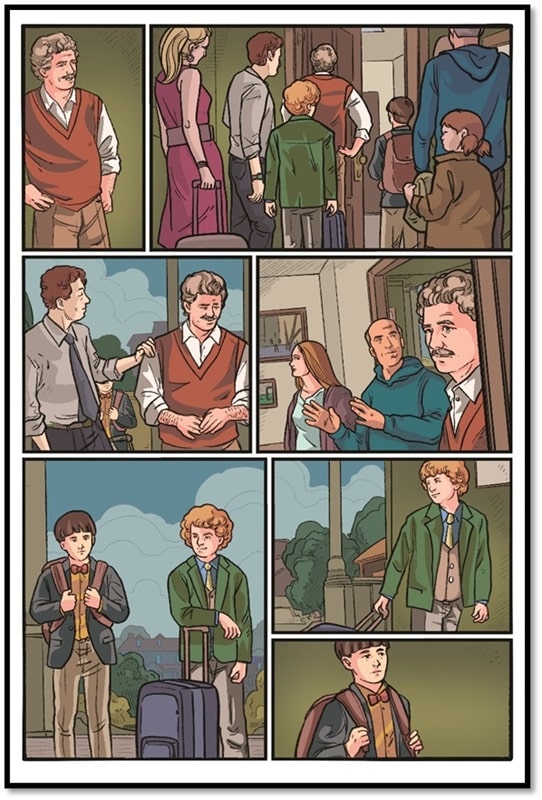 First look at unlettered art from the RSVP E.S.P. graphic novel
First look at unlettered art from the RSVP E.S.P. graphic novel
JOSH: I know I’m a writer, and I know I’m supposed to be able to articulate how I feel by nature, but it’s hard for me to express how far RSVP E.S.P. has surpassed my expectations. I was happy to be working with these people at all. But to watch them each take their turn (Dirk with writing, Joshua with illustrating, Colin with coloring) was like watching the best people at their best. It’s the reason I love collaboration in the first place: it’s not the pressure of wanting to live up to those around you… it’s the inspiration you get from them, the wind tunnel you all create together, the crest that only exists because you all said yes.
DIRK: The book is now fully illustrated and colored, lettering is about to begin, and we’ll be doing a presale launch on Kickstarter in February or March for a Limited Edition Kickstarter Exclusive Hardcover of the graphic novel before we then solicit a standard softcover edition through mass market retailers after that. Details on the upcoming release will be shared on my Instagram, Facebook, and BlueSky accounts at @dirkmanning as well as through my monthly newsletter which people can subscribe to at www.DirkManning.com.
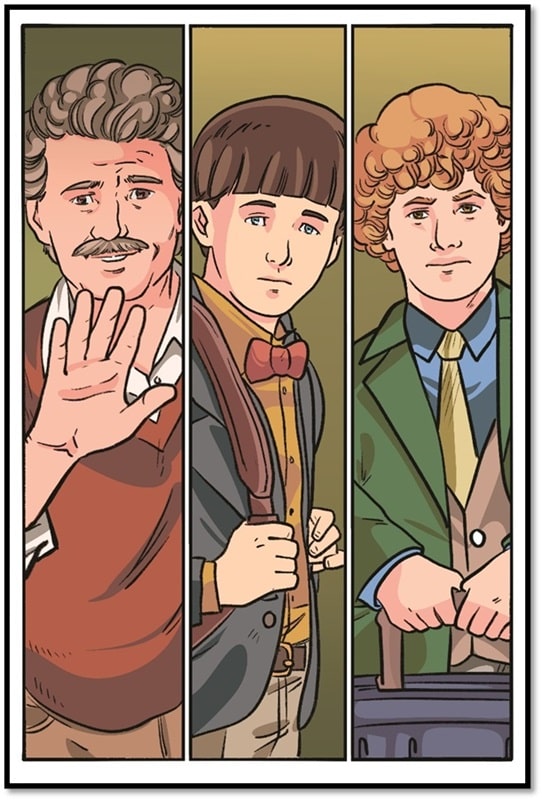 First look at unlettered art from the RSVP E.S.P. graphic novel
First look at unlettered art from the RSVP E.S.P. graphic novel
JOSH: RSVP E.S.P. has been one of the greatest artistic experiences of my life. I simply cannot wait for this to come out. For the world to hold it, to slip into the story of a doctor who has no idea the power that exists in his home and lab. I’m sure I’ll be talking about it all very soon on Facebook and Instagram (I’m just @JoshMalerman at all places online), as well as my website joshmalerman.com.
GC: Thank you both for dropping the news of this exciting project at Black Gate. We’ll be looking out for more in the coming months and hope you’ll sit down with us again near your publication date.
More of Dirk’s comic work includes Butts in Seats: The Tony Schiavone Story (a #1 Best-Selling Graphic Novel on Amazon), Buried But Not Dead (Ringo Award finalist for Best Original Graphic Novel in 2021), Twiztid Haunted High-Ons (Ringo Award finalist for Best Humor Comic in 2020 and 2022) among many others. He is also the author of the inspirational/how-to column turned book series Write or Wrong: A Writer’s Guide to Creating Comics and has contributed several short stories to the RPG game series Clockwork: Dominion for Reliquary Game Studios. His screenplay writing credits include the YouTube horror series BlackboxTV episode “The Hunger” directed by Drew Daywalt and featuring Bonnie Aarons (The Nun, I Know Who Killed Me) and Jon Gries (Napolean Dynamite, Men in Black).
When not at his desk writing, touring the comic convention circuit, and/or sampling his way across the best ice cream shops in the world, Dirk can be found online at www.DirkManning.com and on most social media platforms as @dirkmanning.
In addition to being a best-selling author, Josh Malerman is also one of two singer/songwriters for the Michigan rock band The High Strung, whose song “The Luck You Got” can be heard as the theme song for the Showtime show Shameless. He loves endless, enthusiastic conversations, shooting pool, and thinks Freddy Krueger is the most brilliant monster ever created. He lives in Michigan with his fiancée, the artist/musician Allison Laakko and their five hundred pets.
I would like to personally thank all of you for checking in on Goth Chick News each week and leaving your wonderful and beautifully sarcastic comments over these many years. I look forward to reading each one – especially the regulars. I must also give a shout to Black Gate Photog Chris Z who joined me for the first time in 2012 and whose hysterical snark has almost (but not quite) gotten our press credentials revoked on more than one occasion. And finally, my continual gratitude to Black Gate Big Cheese John O who first published me in Black Gate’s second print issue and whose encouragement turned this quirky side-hustle into a 20+ year passion.
Jim at C2E2 this April!
Jim will be attending C2E2 April 11th-13th in Chicago Illinois! Tickets are available on C2E2’s website. For schedules and for any changes in times or location, please visit their website.
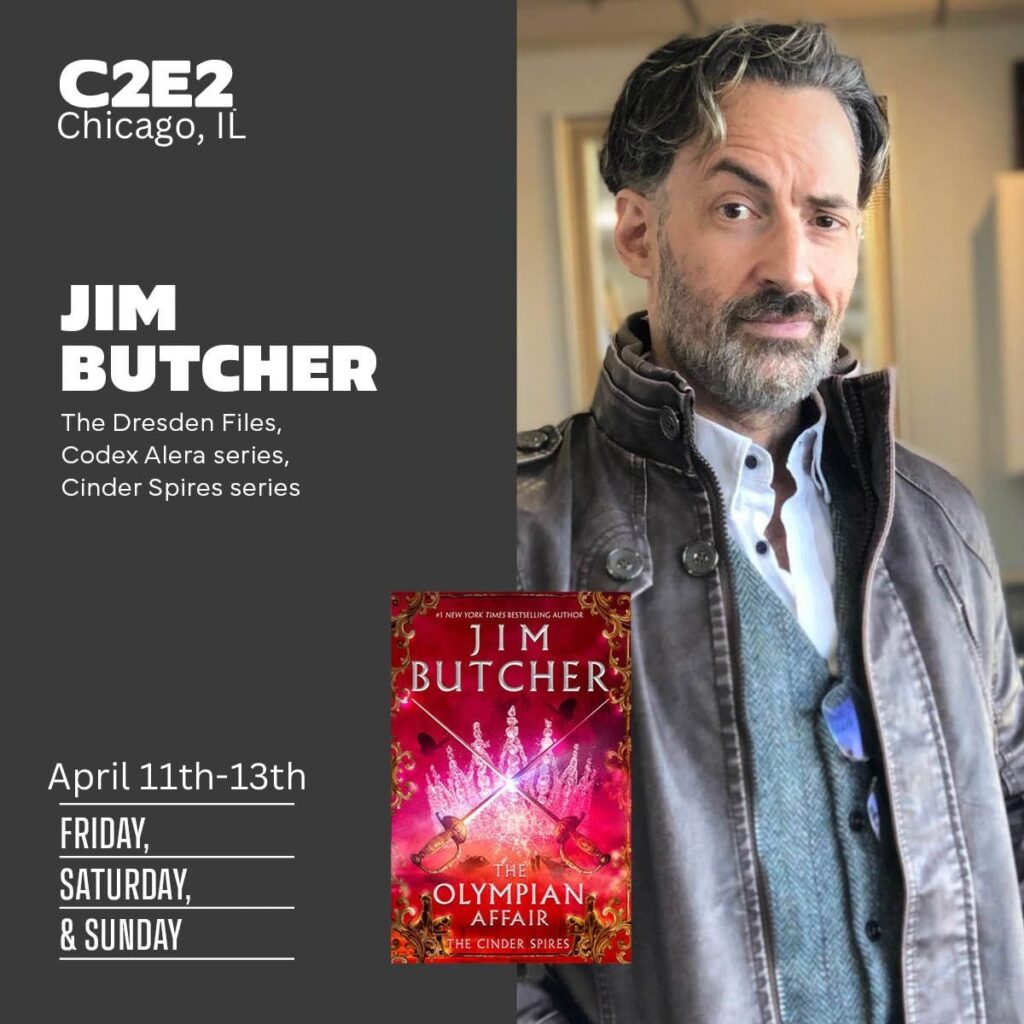
Spotlight on “Diver” by Lewis Buzbee
LitStackers! Line up for this one. The advance word on Diver by Lewis Buzbee is…
The post Spotlight on “Diver” by Lewis Buzbee appeared first on LitStack.
On McPig's Wishlist - The Farmhouse

The Farmhouseby Chelsea Conradt
Every woman who has lived on this farm has died. Emily just moved in.
When Emily Hauk's mother dies, it's time for her and her husband, Josh, to finally leave San Francisco. A farm in rural Nebraska is everything they want for a fresh clear skies, low costs, and distance from the grief back home.
They should have asked why the farm was for sale.
Three years ago, a teenage girl went missing from the farm. Soon after, the girl's mother mysteriously died. The deeper Emily digs, the more stories she finds of women with a connection to her new home who've met their own dark ends.
The farmhouse was meant to be Emily's fresh start, but with each passing day, her sanctuary slips further away. The barn seems to move throughout her property, as though chasing her. Her mother's favorite music drifts across the corn. She swears she saw blood in one of the farmhand's trucks. And the screams that wake her are not foxes, no matter how many times her husband says otherwise.
Despite Josh's skepticism, Emily feels the darkness that has seeped into the soil of her farm. And if she wants to claim this place as her own, she'll have to find the truth before whatever watches from the cornfield takes her too.
Expected publication June 17, 2025
Comment on Into 2025 by Bill
In reply to Bill.
Just to add, we have seen three groups of raiders in the series (four if you count Stephen’s) and only Tier had taken along a technician to extract the Essentia…
Hal Clement Helped Launch My Writing Career
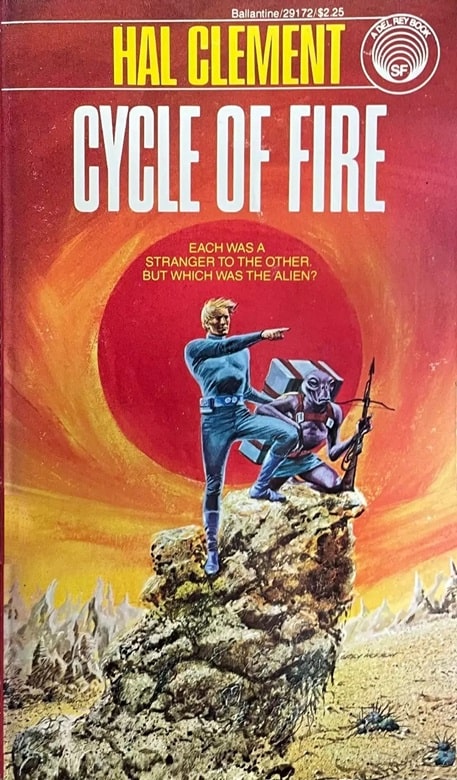
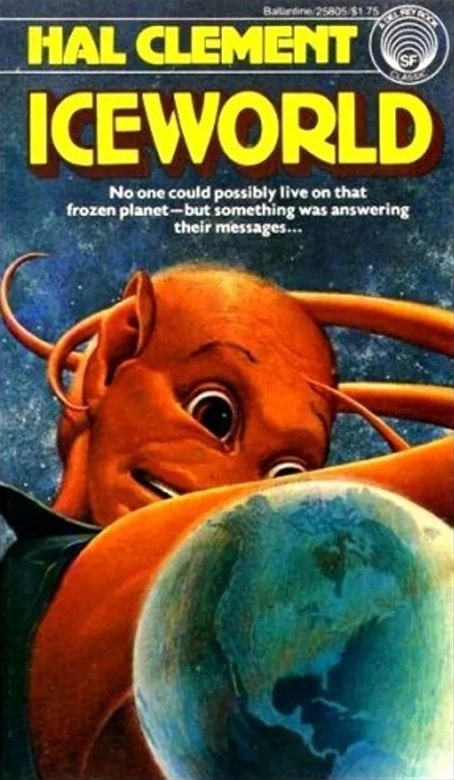
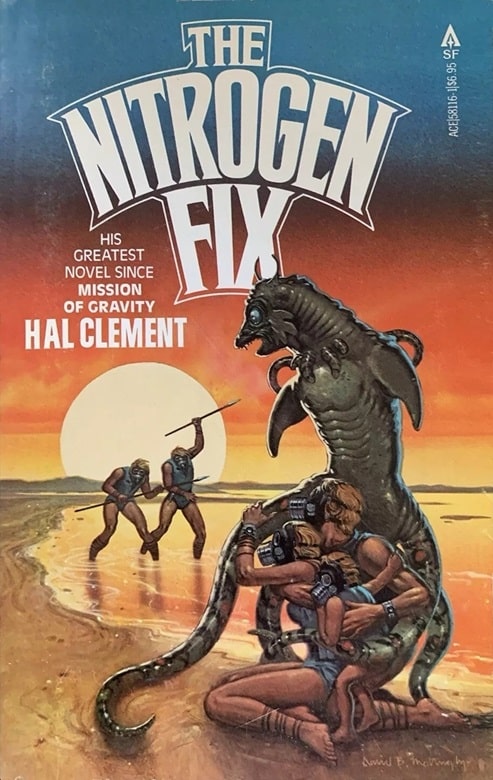
Novels by Hal Clement: Cycle of Fire (Del Rey, February 1975), Iceworld
(Del Rey, October 1977), and The Nitrogen Fix (Ace Books, September 1980).
Covers by Gray Morrow, H. R. Van Dongen, and David B. Mattingly
Hal Clement (real name, Harry Stubbs) was born in 1922 and passed away in 2003. He graduated from Harvard and held degrees in astronomy, chemistry and education. A former B-24 pilot, he worked for most of his life as a high-school science teacher at Milton Academy, in Milton, MA. He gained his reputation as a writer of hard science fiction, a pioneer of the genre. I have read his novels The Nitrogen Fix and Cycle of Fire, both of which I enjoyed immensely.
I got to meet Hal at a sci-fi convention about 30 years ago. I was a struggling young writer in my early 20s, working hard on a science fiction novel modeled in the styles of Edgar Rice Burroughs and Sir Arthur Conan Doyle. Hal was part of a panel discussion on how to break into the writing business. His fellow panelists were comprised of some Star Trek novelists and editors. I was thrilled to attend the panel; with all the youthful exuberance one could imagine.
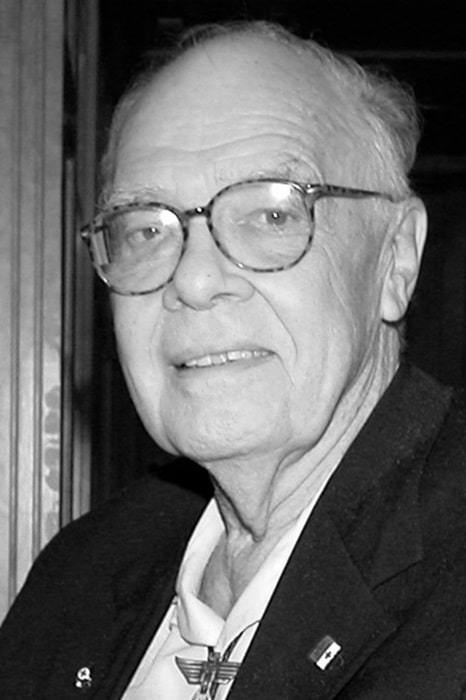 Hal Clement
Hal Clement
After the panel discussion was through and people were milling about, I approached the group of panelists, including Hal. I had five or six manilla envelopes, each containing the first few chapters of my novel. Frightened, yet determined, I introduced myself and asked the panelists if any of them would be willing to take a look at the first few chapters of my book and, if they were so inclined, let me know what they thought of it.
This offended one of the Star Trek novelists (or editors, wasn’t sure), and she tore me down, berating me, telling me that asking this of them was grossly inappropriate, in bad form, and completely unprofessional. Her peers were shaking their heads at me, in agreement with her assessment of my solicitation.
Except for Hal. As the Trek writers and editors walked away, leaving me stunned, Hal said to me, “I’d like to take a look at it.” I was happy but still upset that I’d committed some kind of inexcusable writer’s faux pas, so I awkwardly thanked him and walked away.
I never heard back from Hal, which is fine, but about an hour or so later, walking about the con, I saw him again, sitting in a chair, reading my manuscript.
That gave me hope to keep going, to keep writing. It meant a lot to me then, and it still does to this day.
Jeffrey P. Talanian’s last article for Black Gate was From Al-Qadim to The East Mark Gazetteer. He is the creator and publisher of the Hyperborea sword-and-sorcery and weird science-fantasy RPG from North Wind Adventures. He was the co-author, with E. Gary Gygax, of the Castle Zagyg releases, including several Yggsburgh city supplements, Castle Zagyg: The East Mark Gazetteer, and Castle Zagyg: The Upper Works. Read Gabe Gybing’s interview with Jeffrey here, and follow his latest projects on Facebook and at www.hyperborea.tv.
Graphic Audio Preorders and News
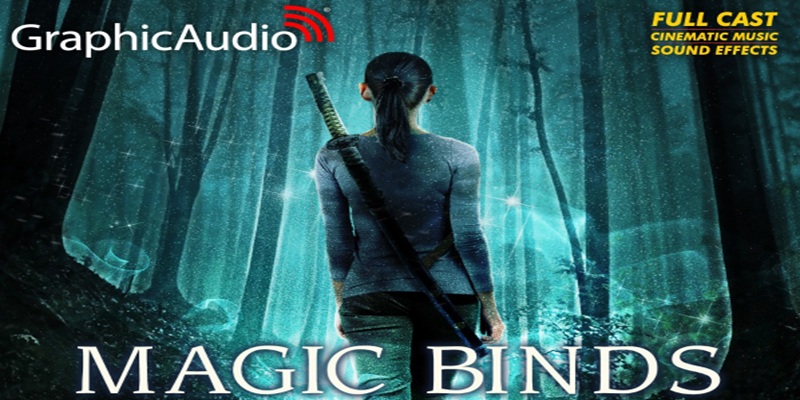
The preorder for the dramatized adaptation of Magic Binds, Kate Daniels 9, is live on the Graphic Audio website. The release will be March 25th on all platforms – that means for the GA app as well as Audible, Hoopla, Chirp etc.
Mercenary Kate Daniels knows all too well that magic in post-Shift Atlanta is a dangerous business. But nothing she’s faced could have prepared her for what’s to come in this heart-stopping novel in the #1 New York Times bestselling series.
Kate and the former Beast Lord Curran Lennart are finally making their relationship official. But there are some steep obstacles standing in the way of their walk to the altar.
Kate’s father, Roland, has kidnapped the demigod Saiman and is slowly bleeding him dry in a never-ending bid for power. A Witch Oracle has predicted that if Kate marries the man she loves, Atlanta will burn and she will lose him forever. And the only person Kate can ask for help is long dead.
The odds are impossible. The future is grim. But Kate Daniels has never been one to play by the rules…
I am excited for every one of these immersive releases, but Magic Binds is my favourite of the KD main series, so I double-extra cannot wait. Roman wedding planner extraordinaire, Christopher’s identity revealed, Kate in a tutu, the battle for Atlanta AND the realisation that GA Magic Triumphs is right around the corner, which will of course be epic!
I’m trying to pace myself, so I’ll remind you that first we have the Graphic Audio release of Magic Shifts this month, on the 31st of January. We’ll get exclusive samples of it closer to the date.
I know that everyone wants to know what will happen after the main Kate series is fully adapted. Will we get the same full cast of actors, immersive sound effects and cinematic music treatment for Gunmetal Magic, Magic Stars, the Wilmington Years, Iron and Magic, Blood Heir? I don’t yet have answers for you, I’m afraid, but our enthusiasm has been heard.
What I can share is that we had a very productive meeting just before the holidays – and the official release for the dramatized adaptation of Burn for Me, Hidden Legacy 1, is scheduled by Graphic Audio for April 25th this year.
So we’ll have overlapping Kates and Nevadas for a while, living the Horde dream!
The post Graphic Audio Preorders and News first appeared on ILONA ANDREWS.
7 Author Shoutouts | Authors We Love To Recommend
Here are 7 Author Shoutouts for this week – authors we love to recommend. Find…
The post 7 Author Shoutouts | Authors We Love To Recommend appeared first on LitStack.

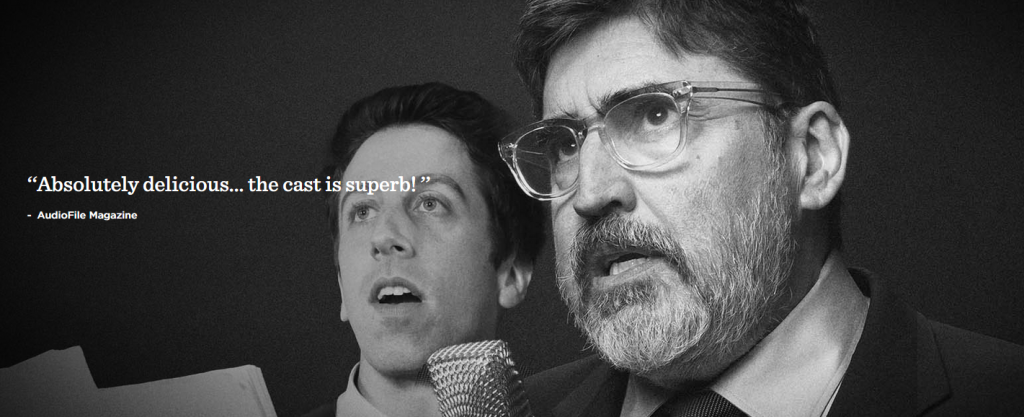




Recent comments